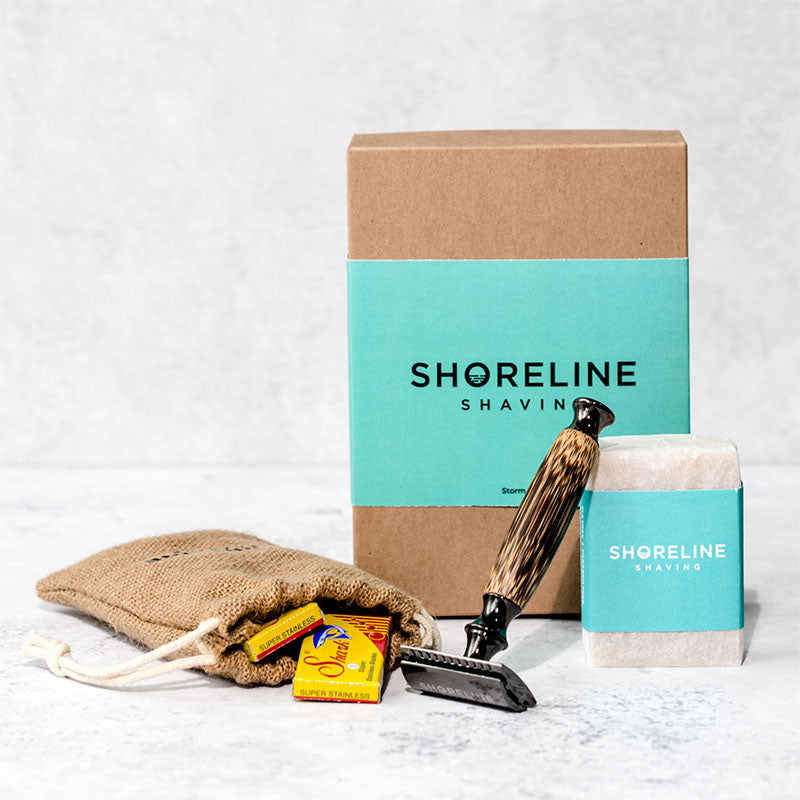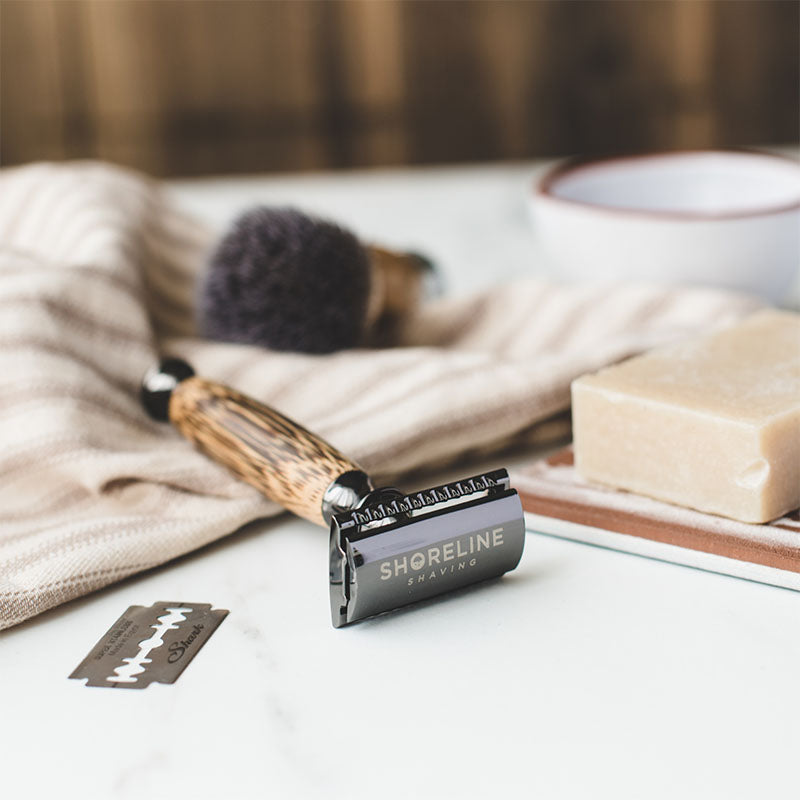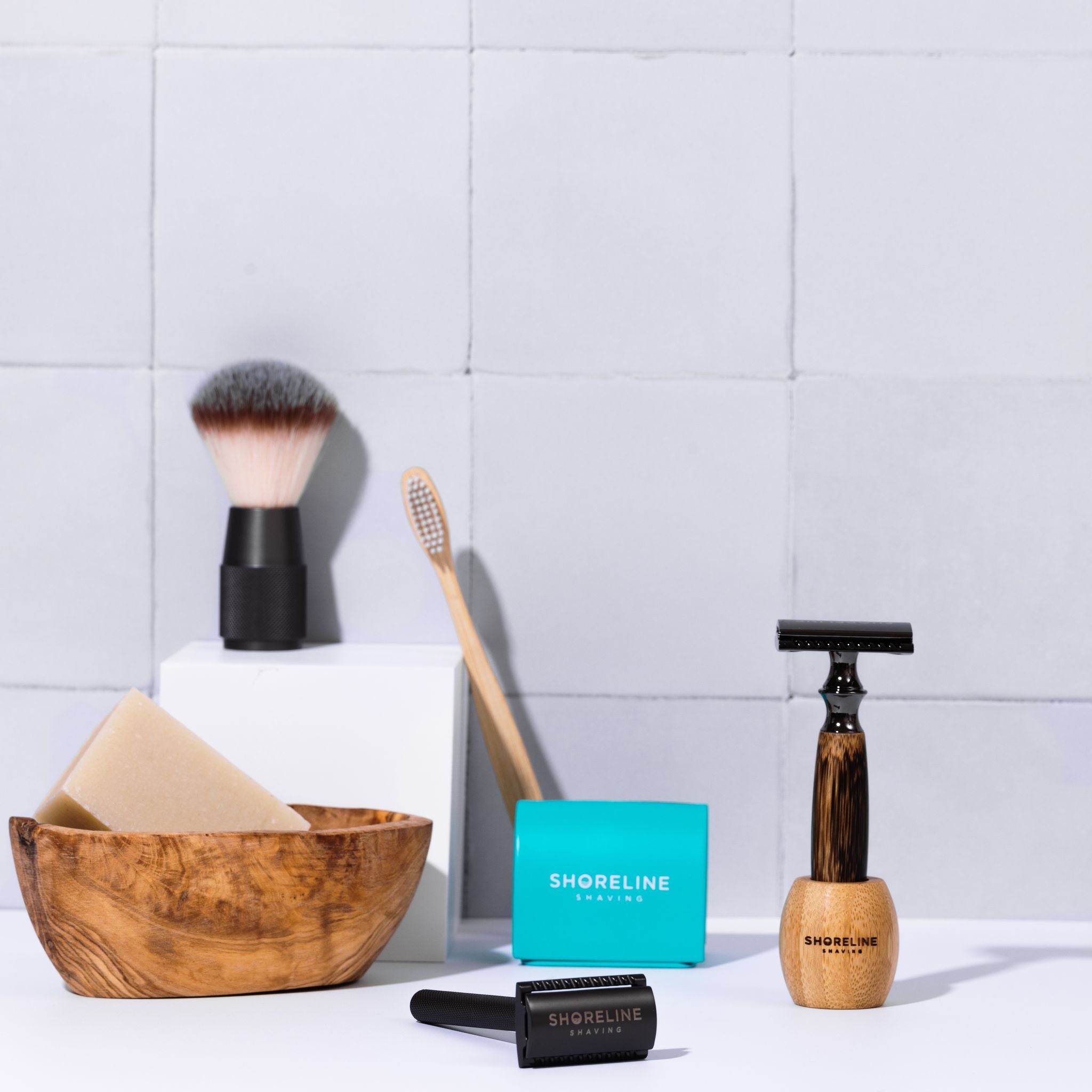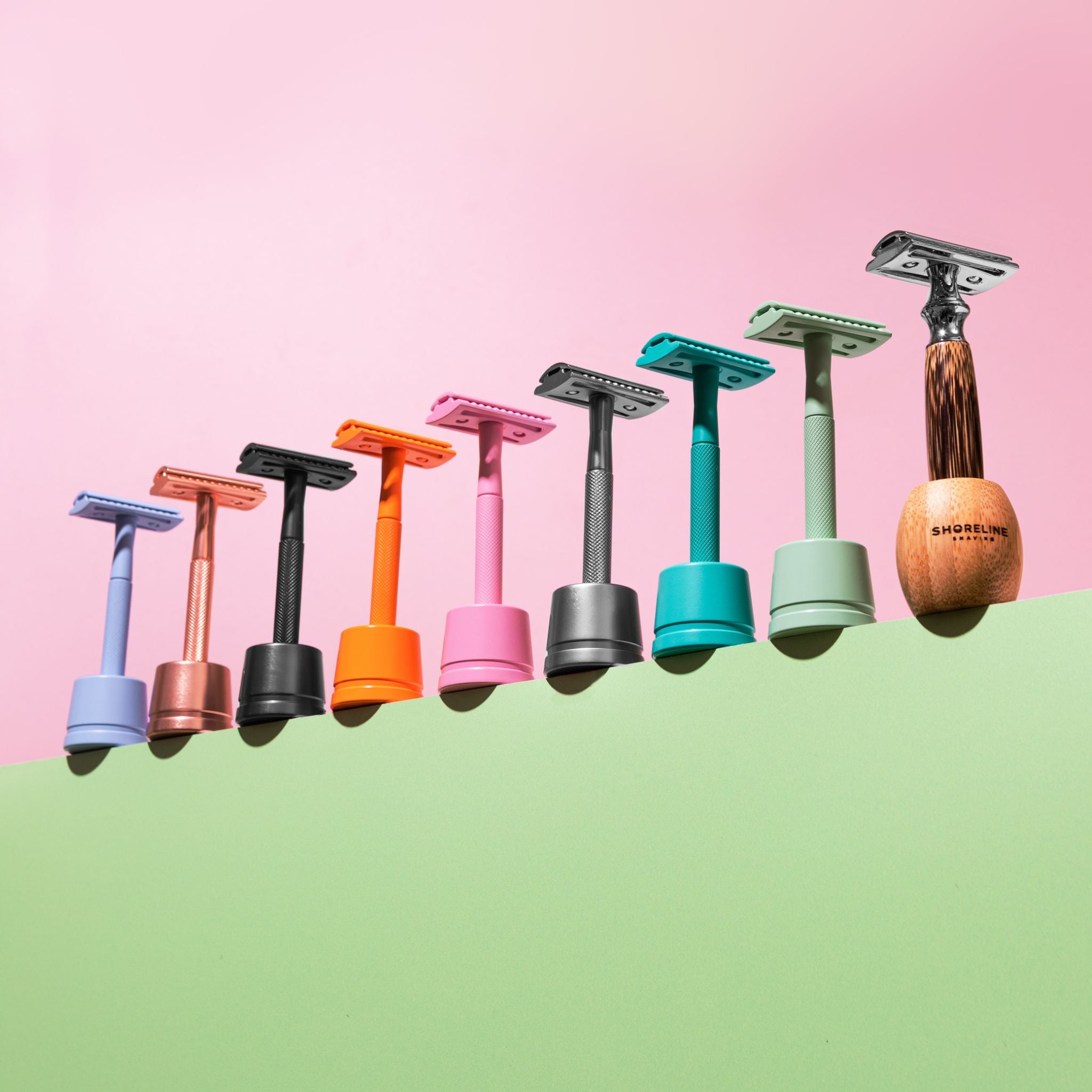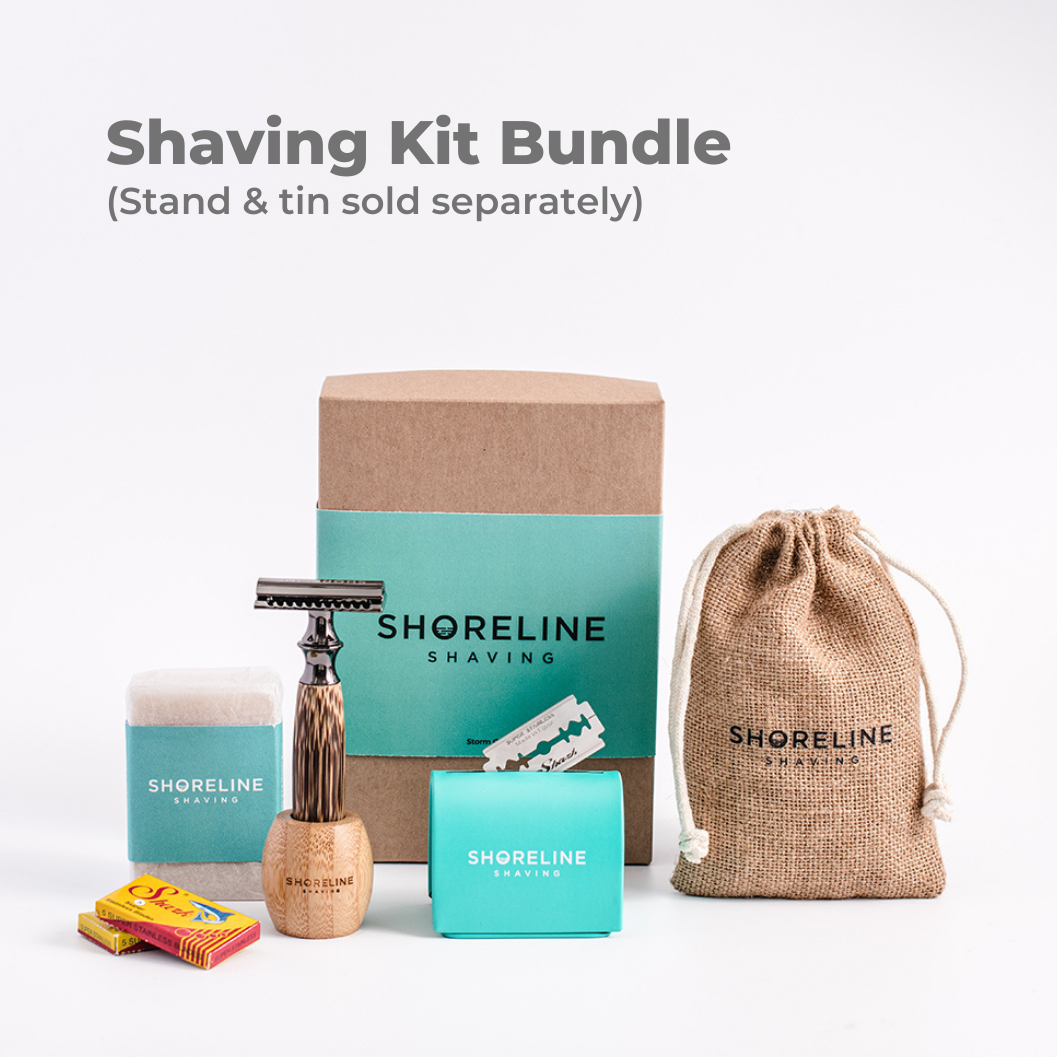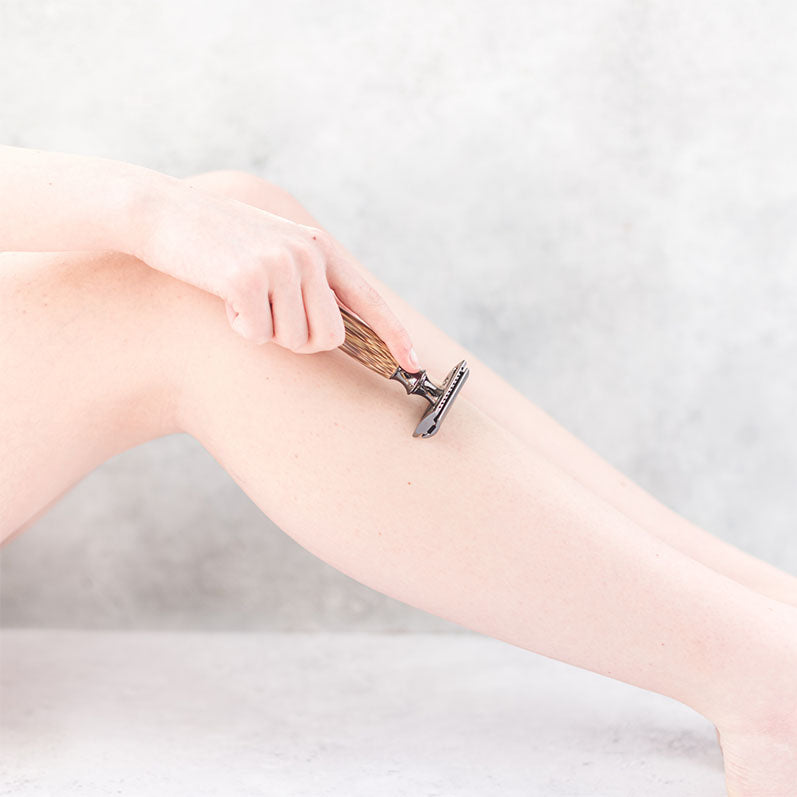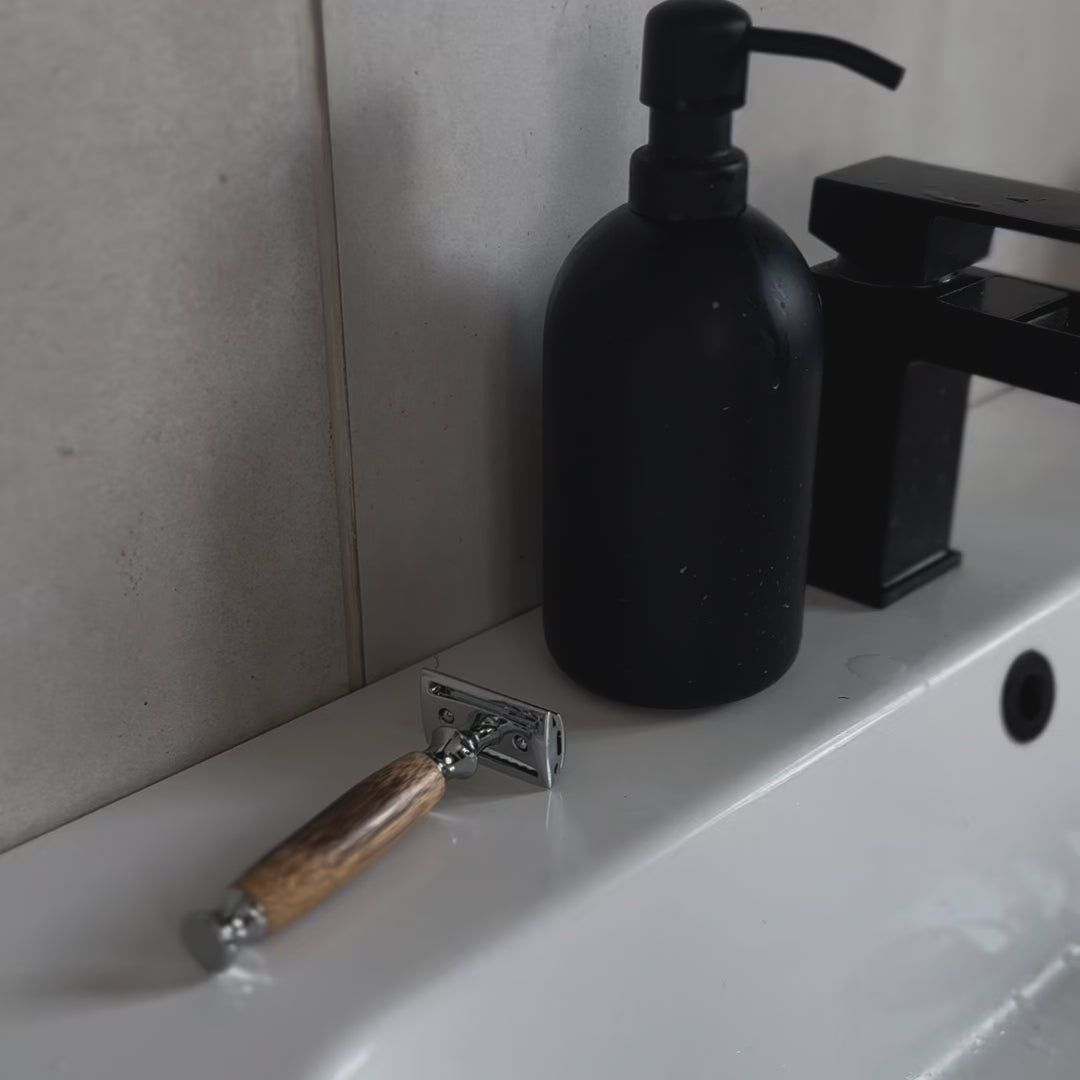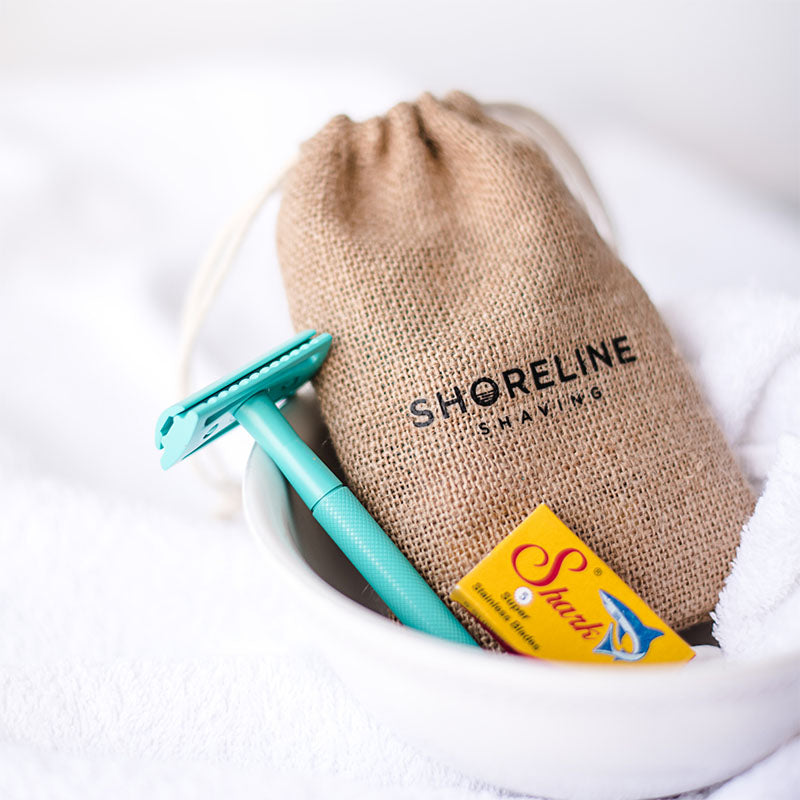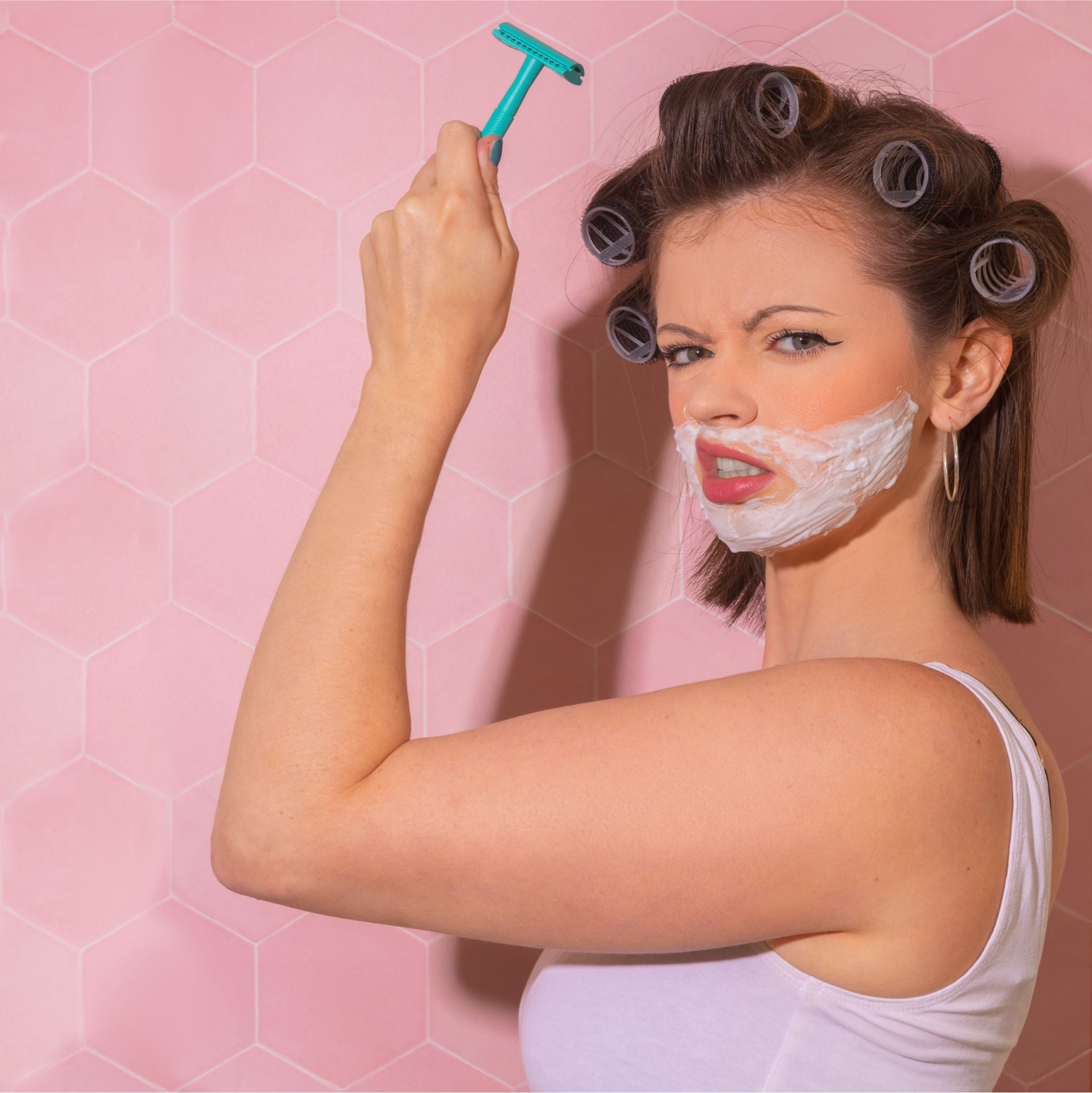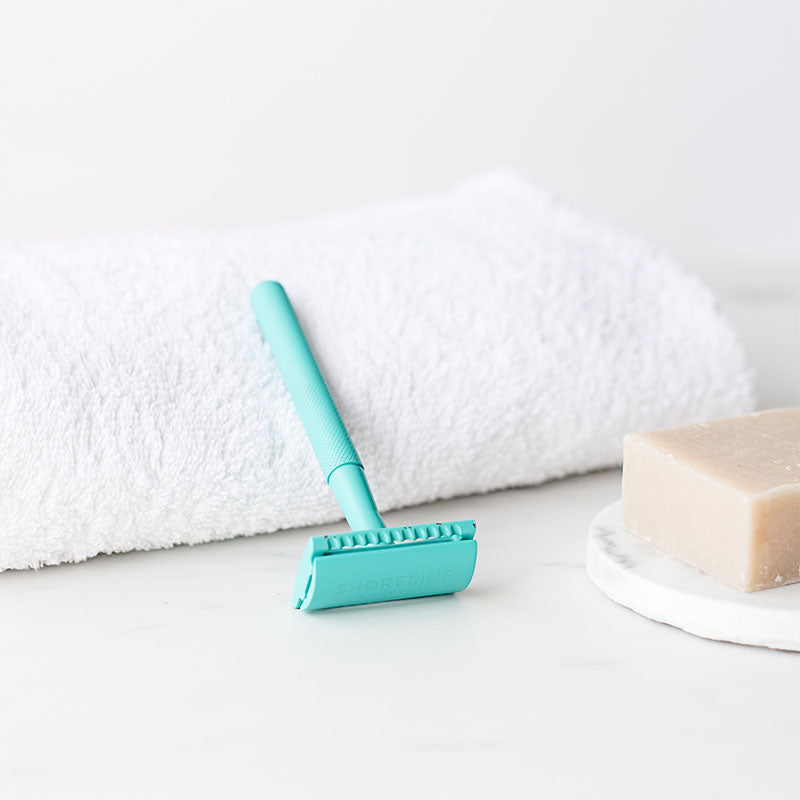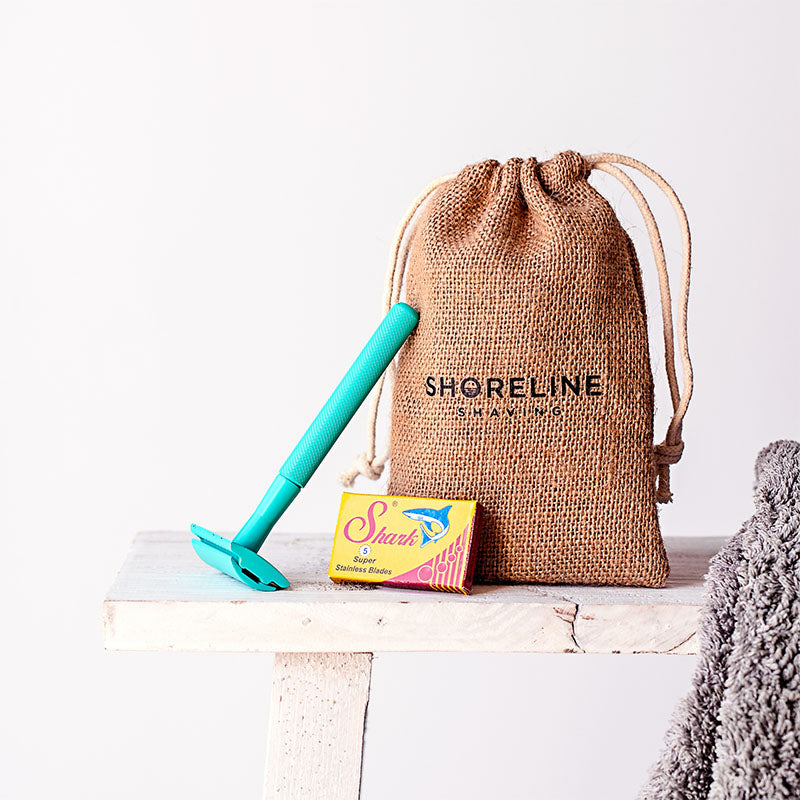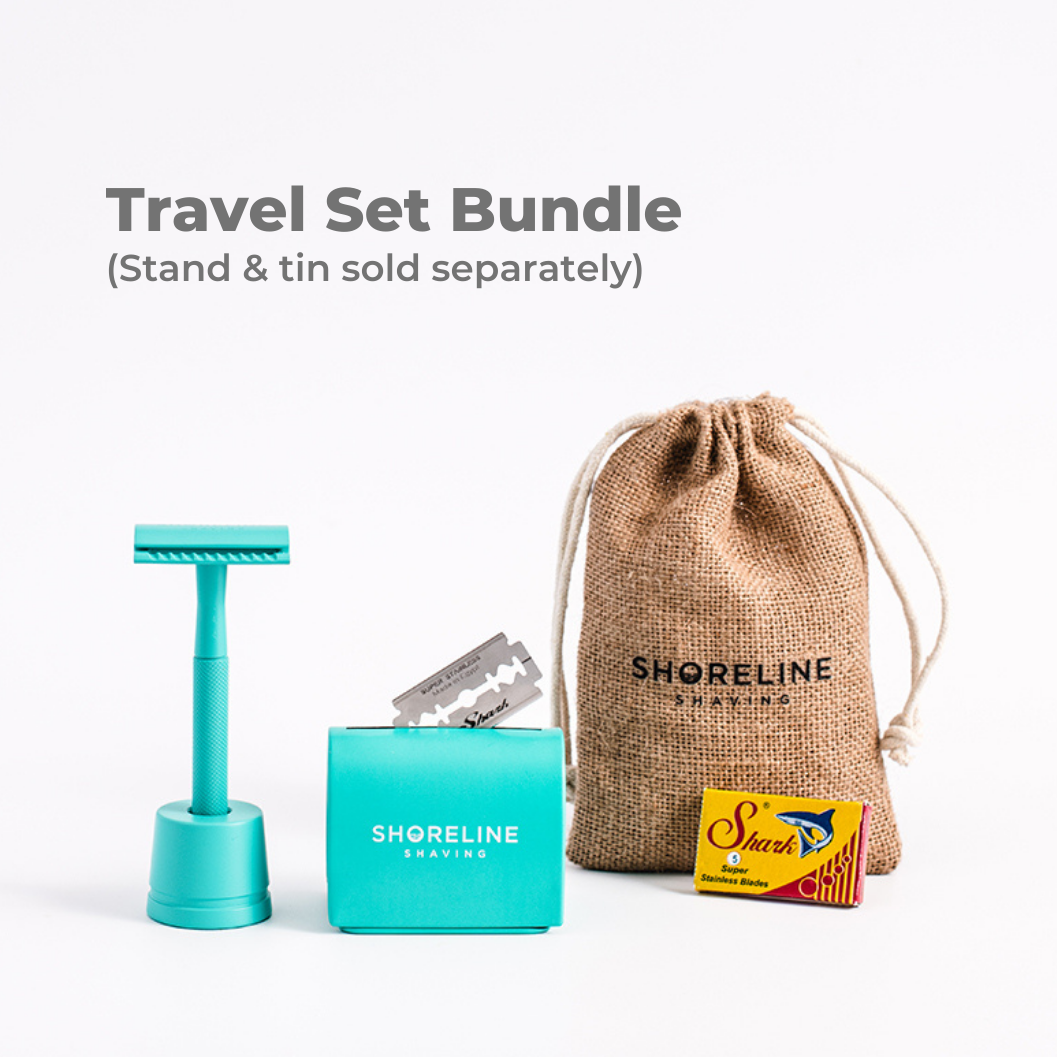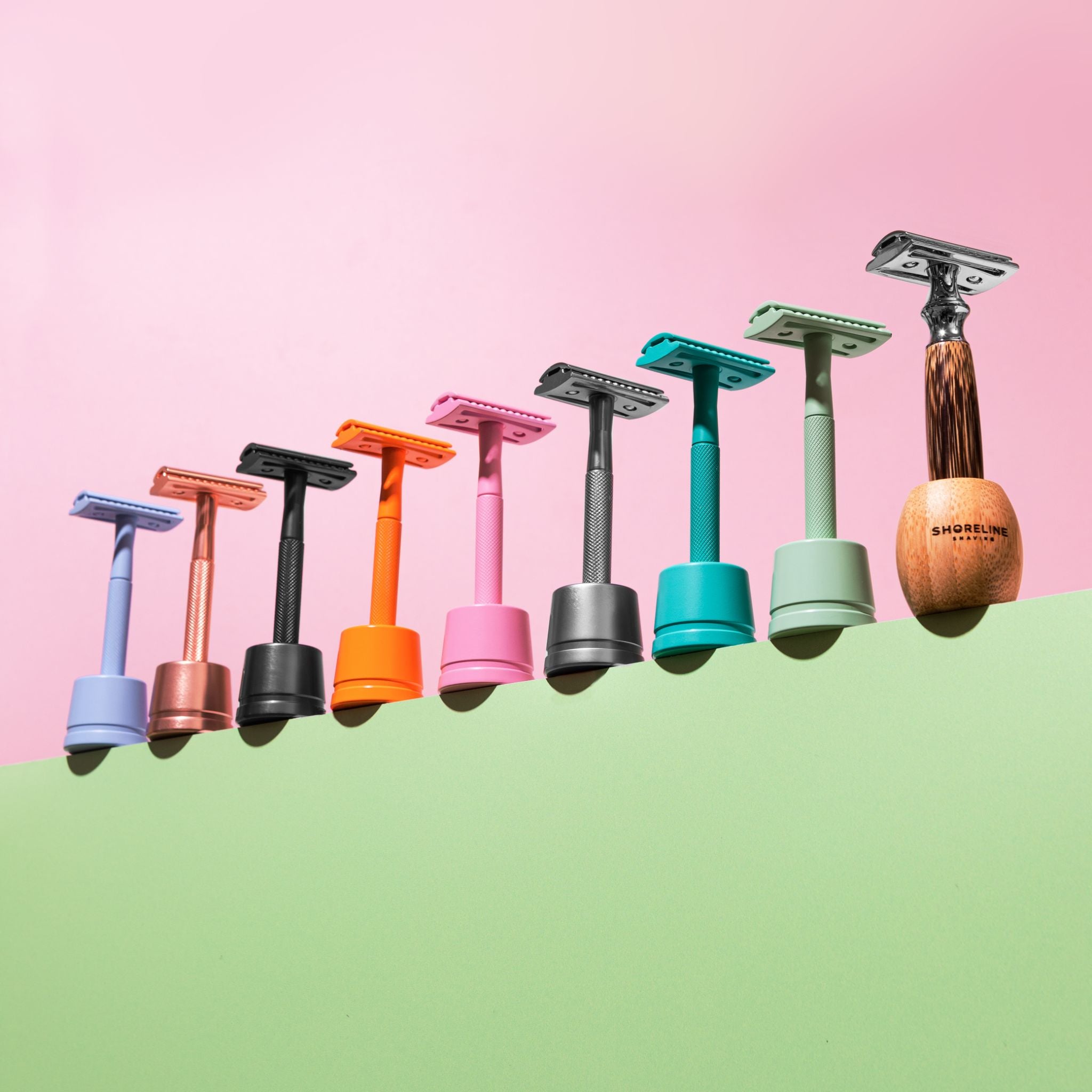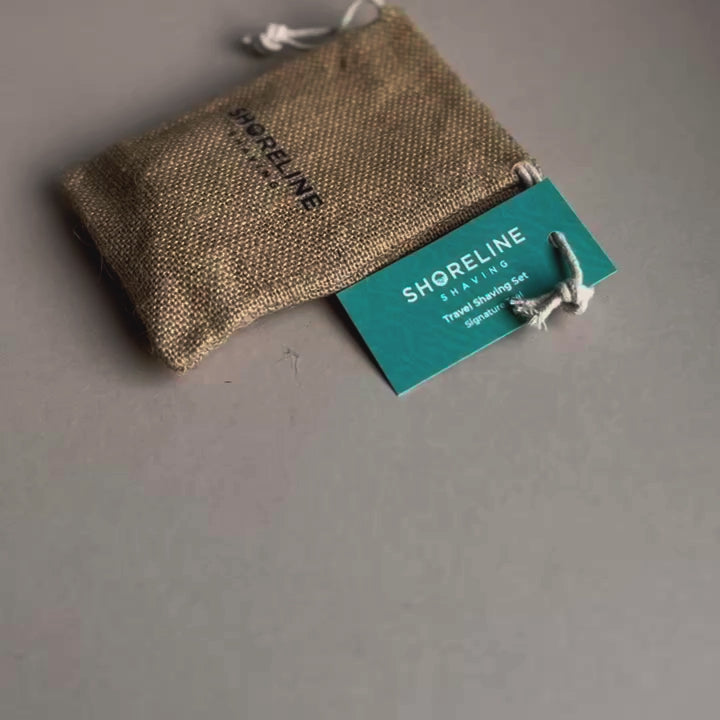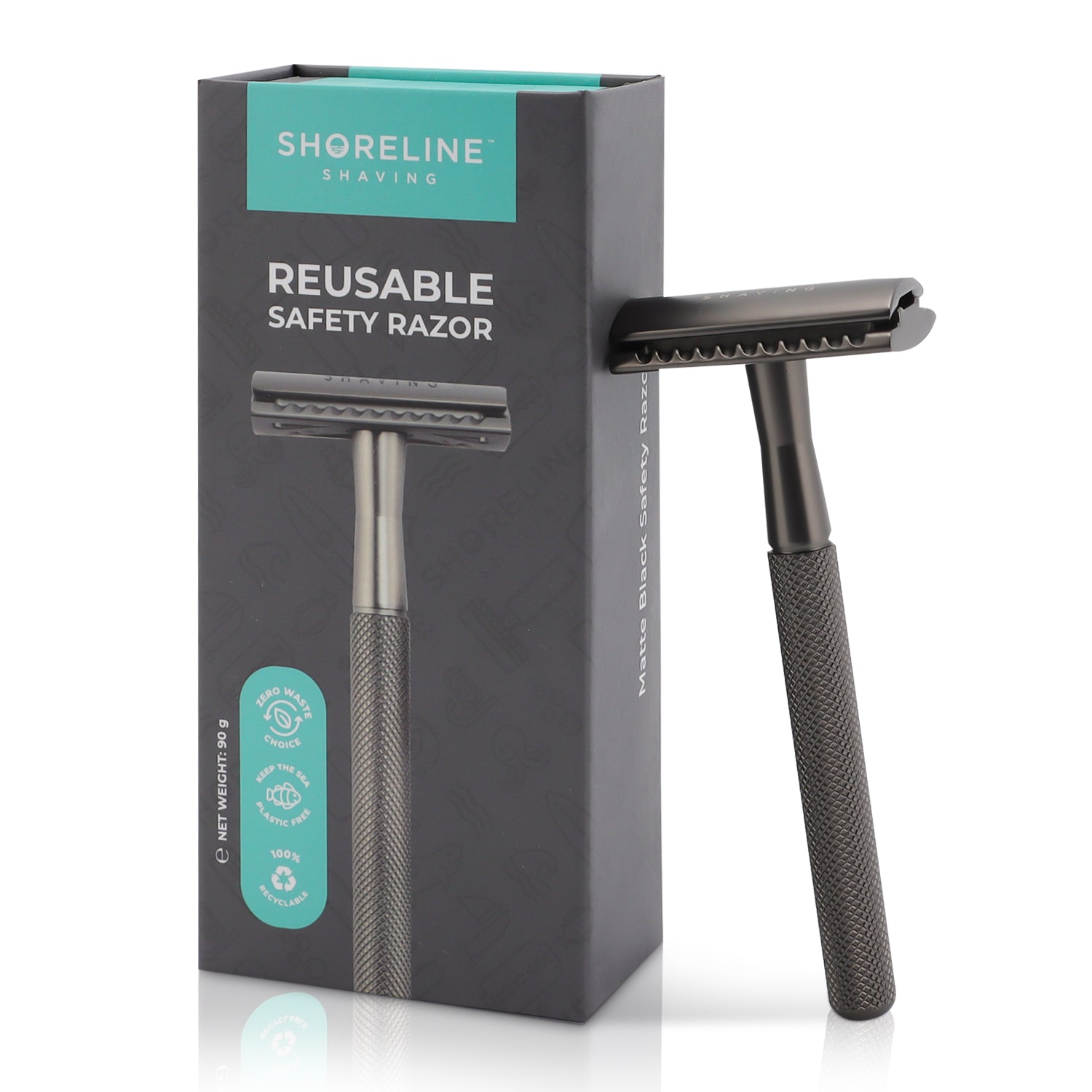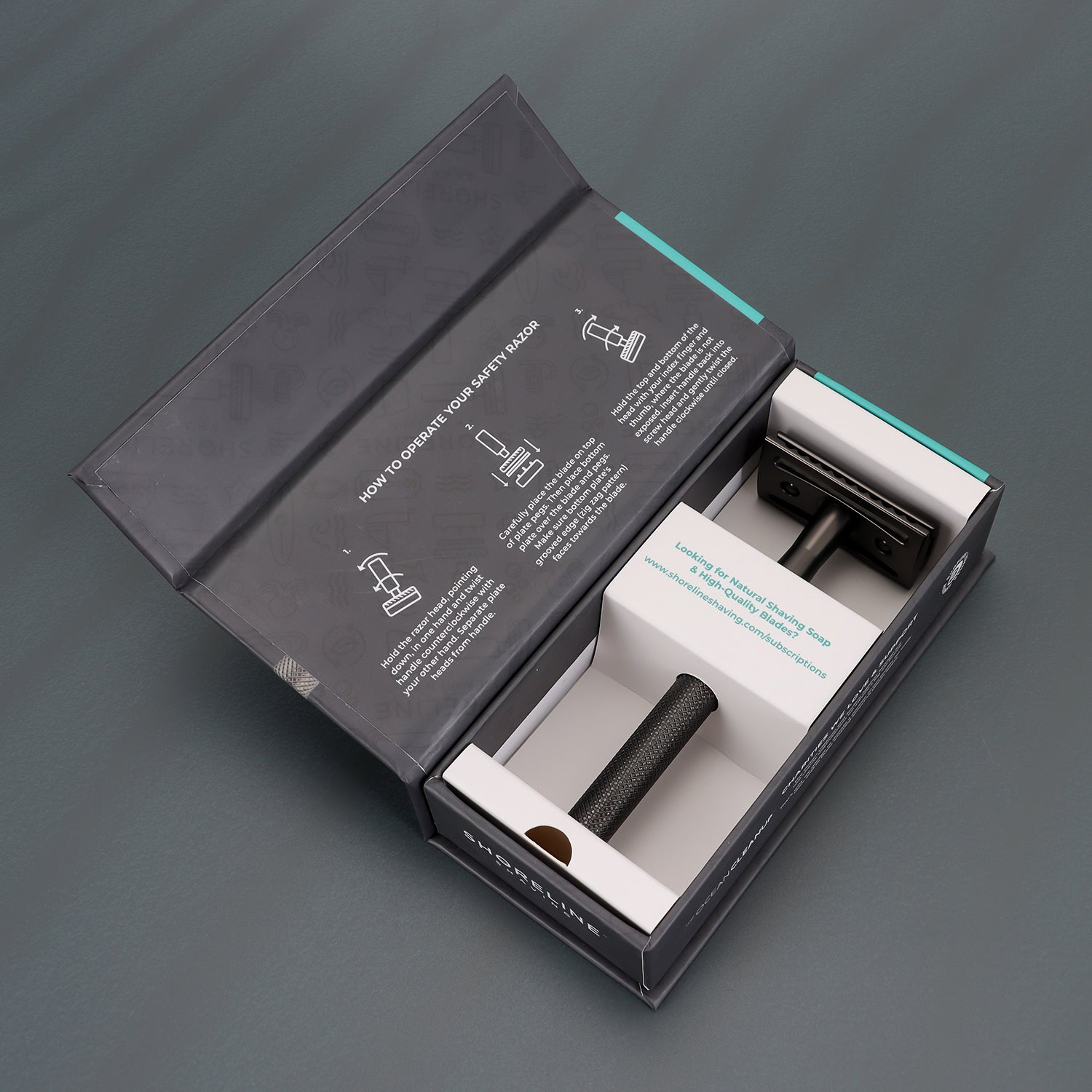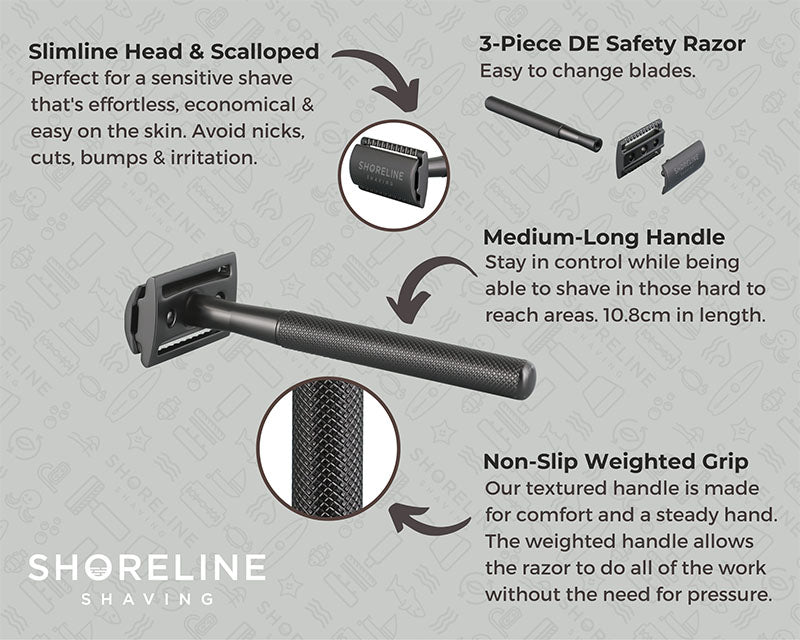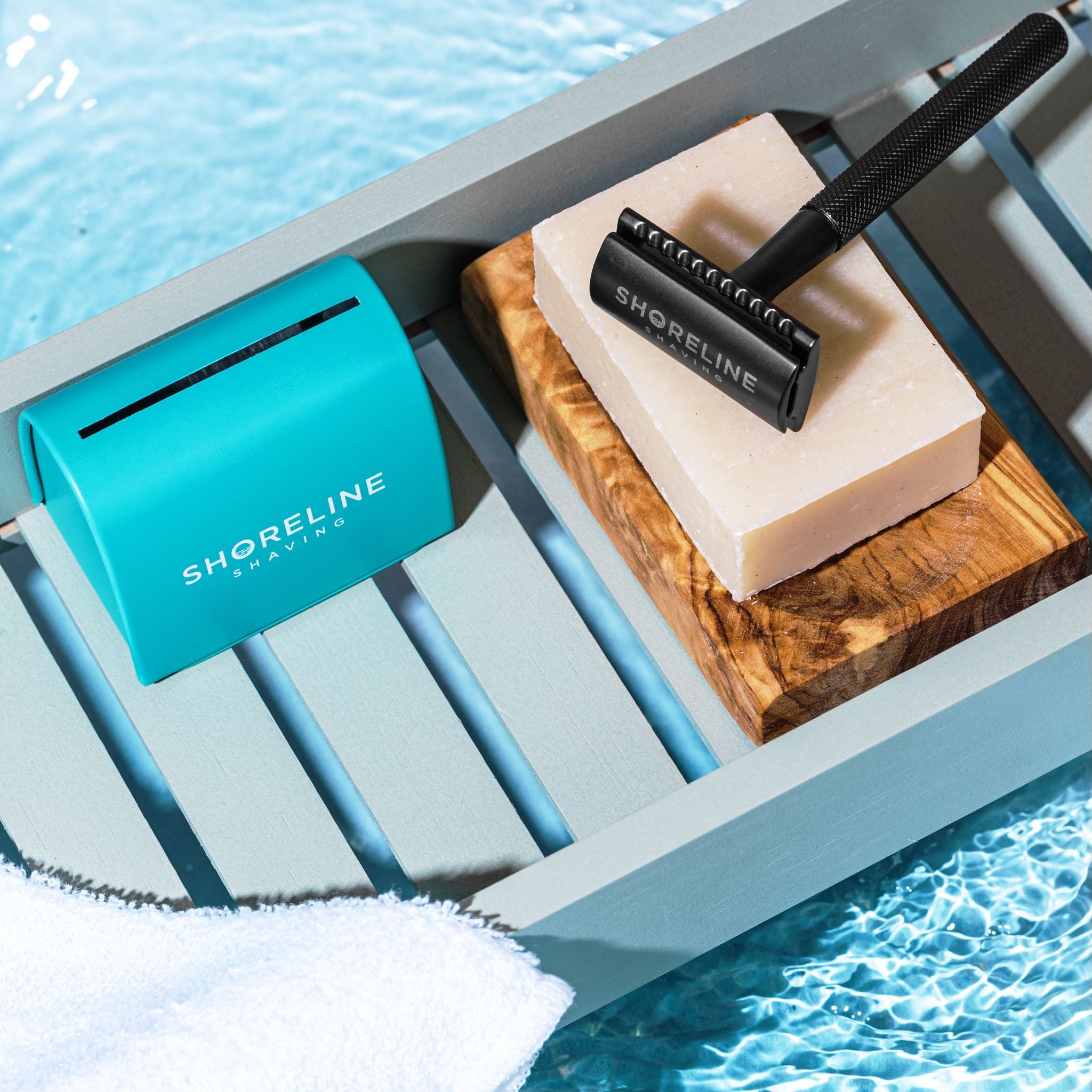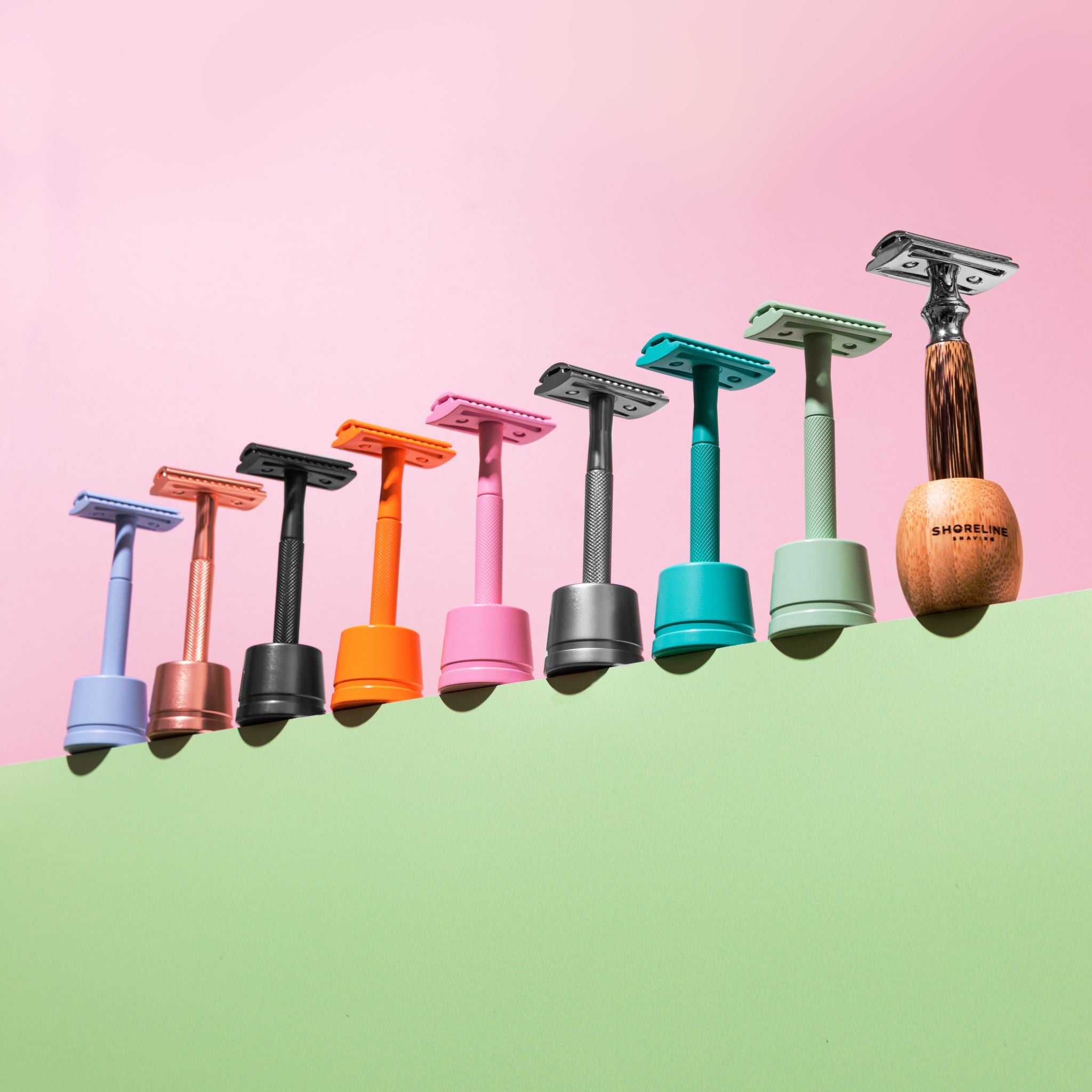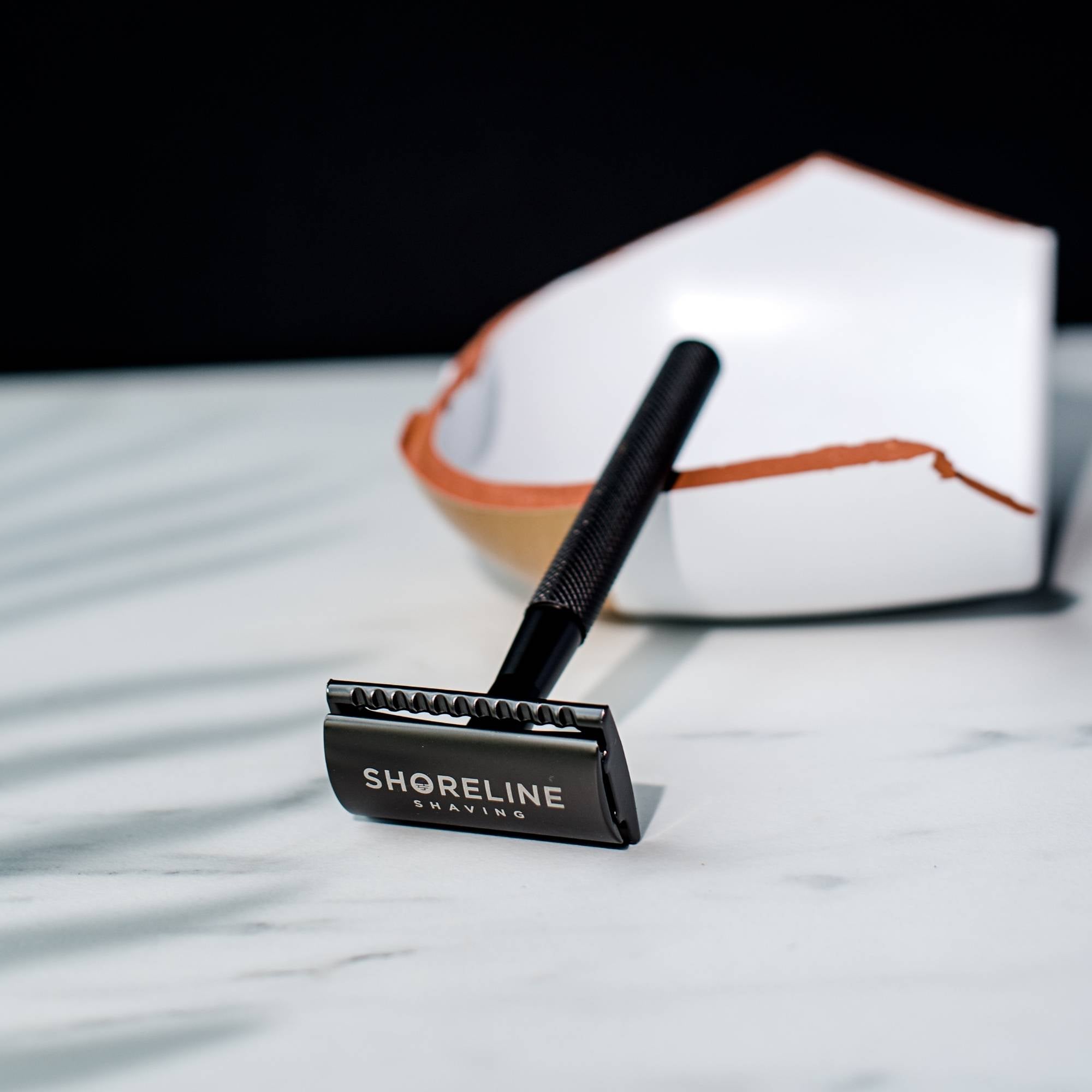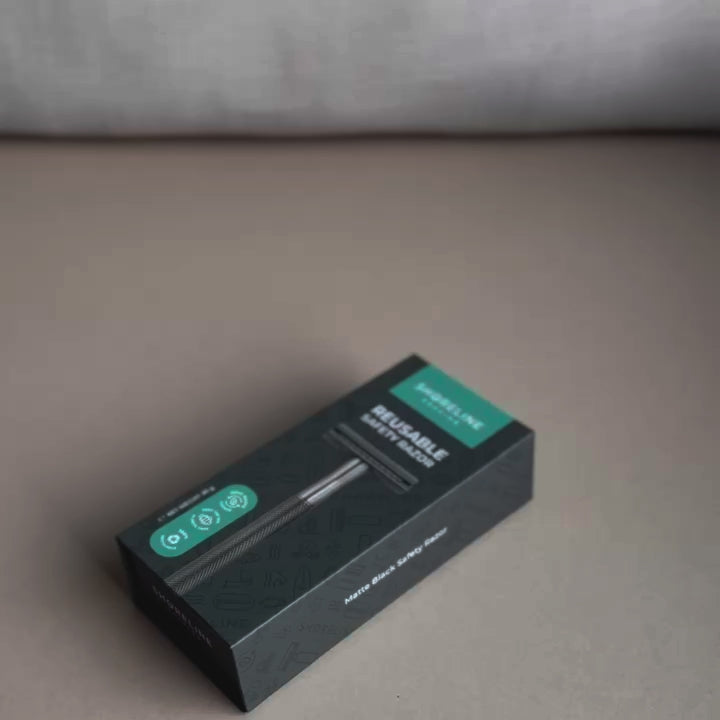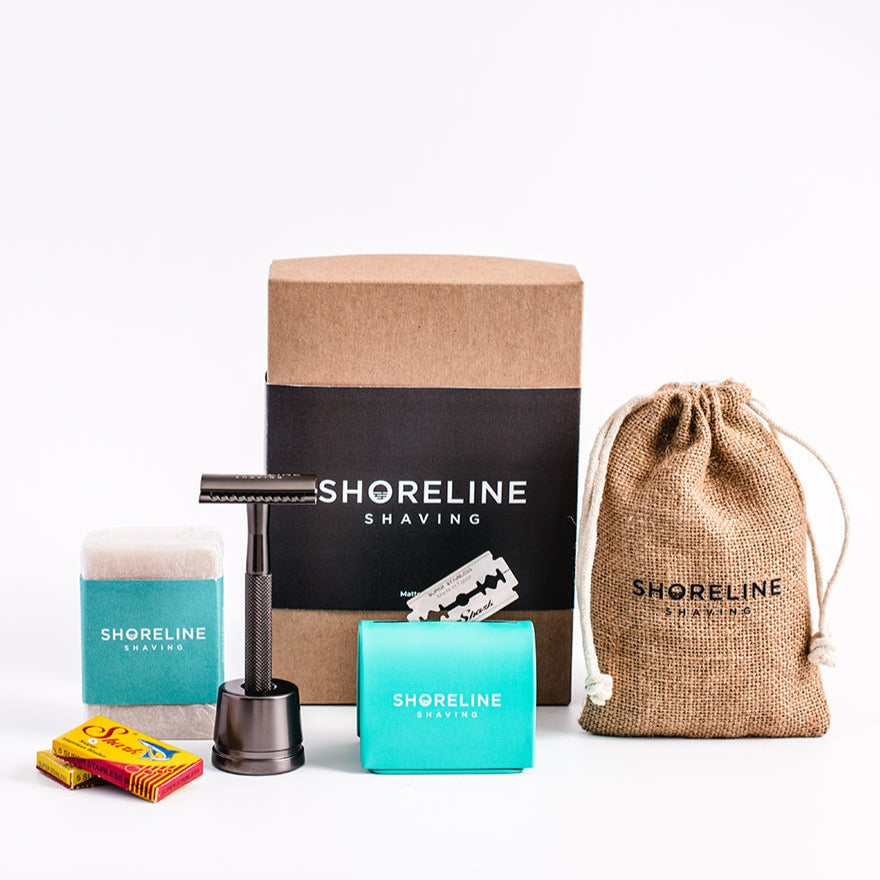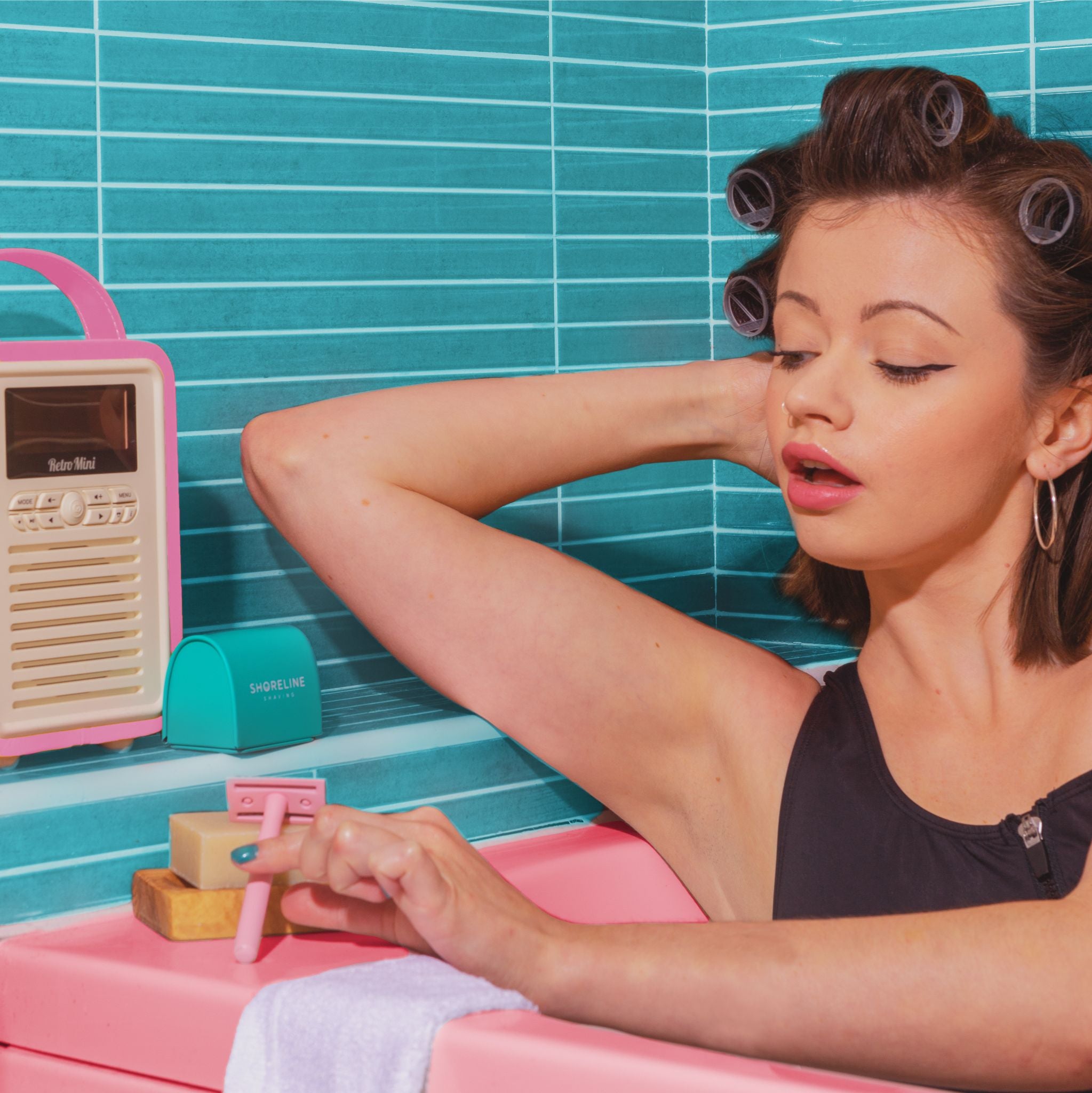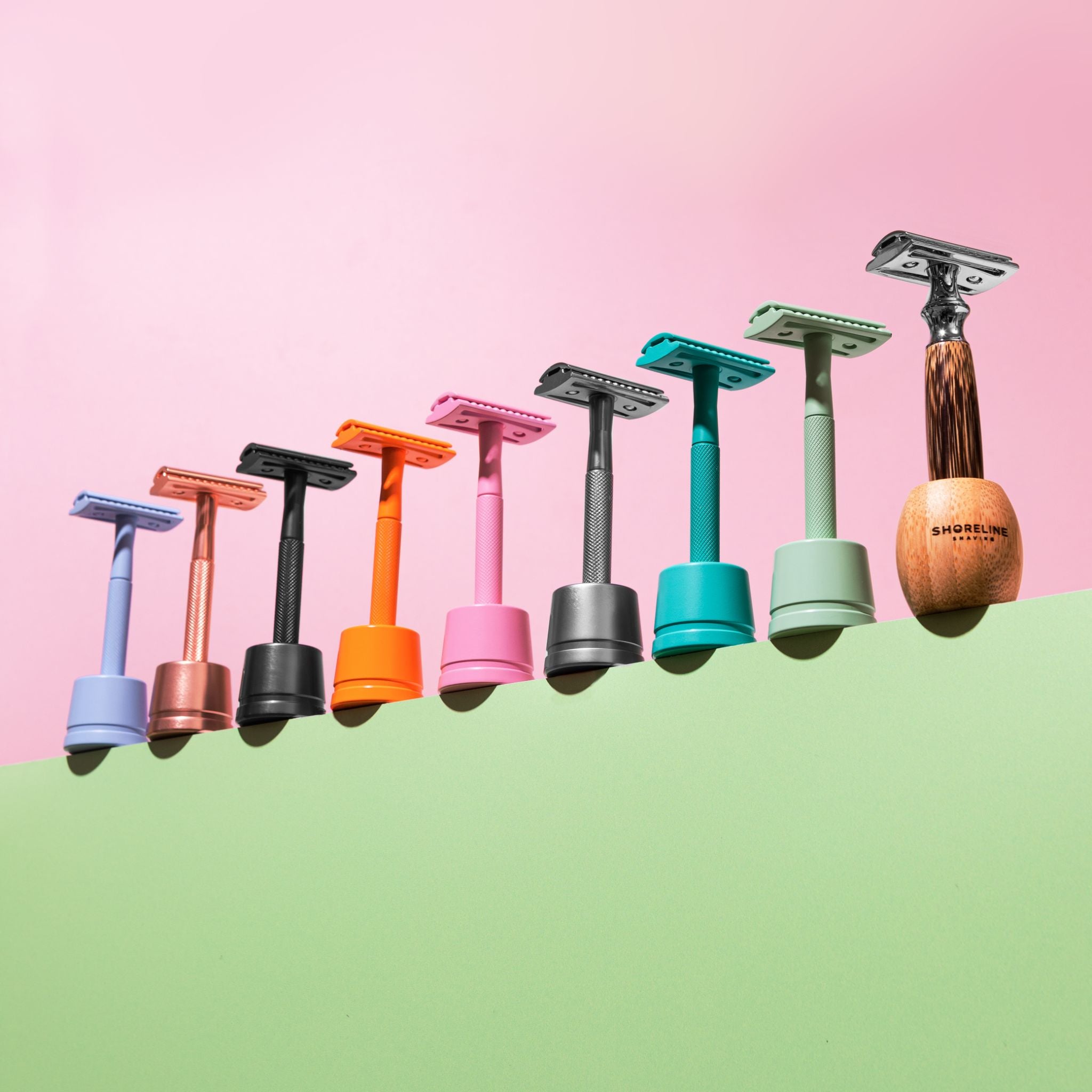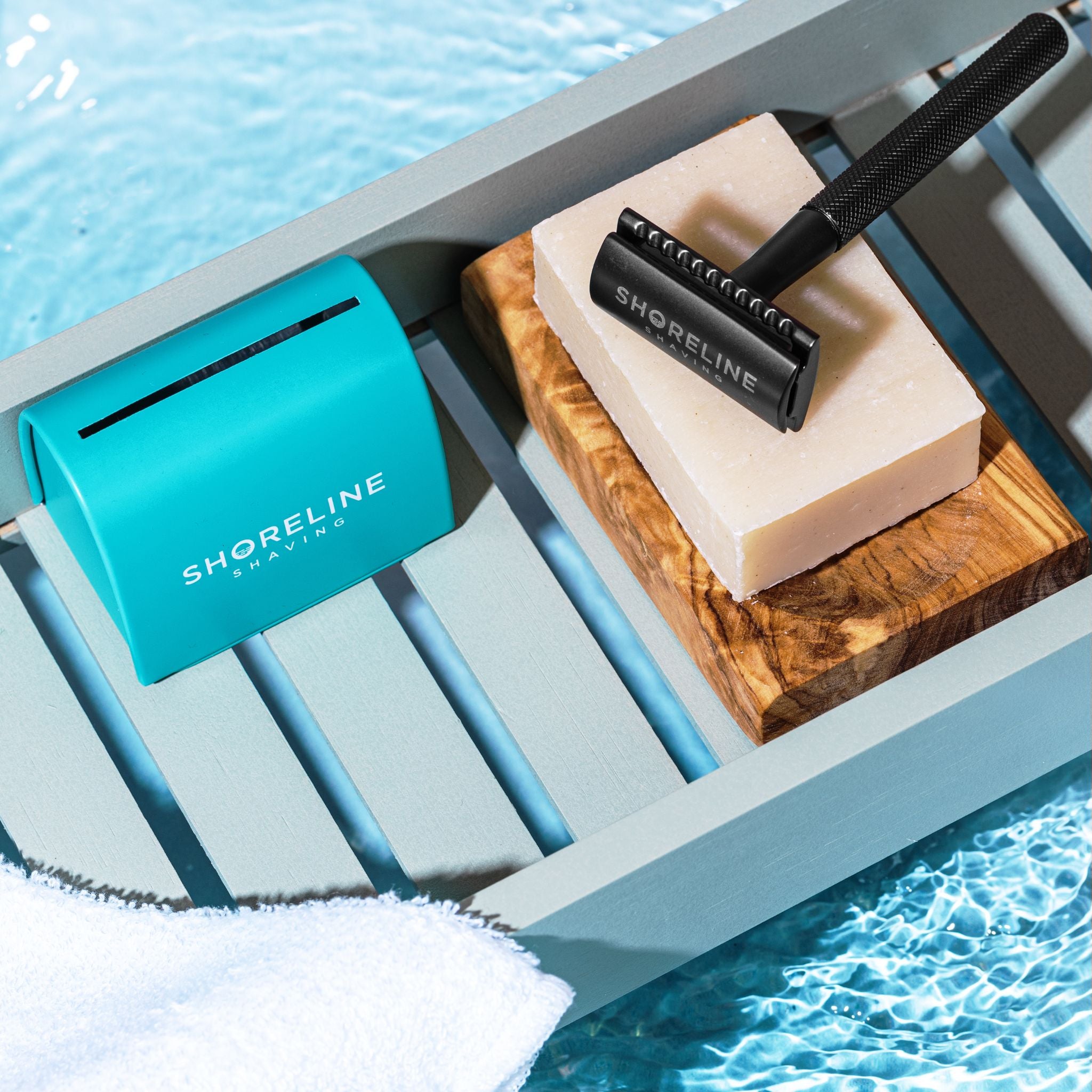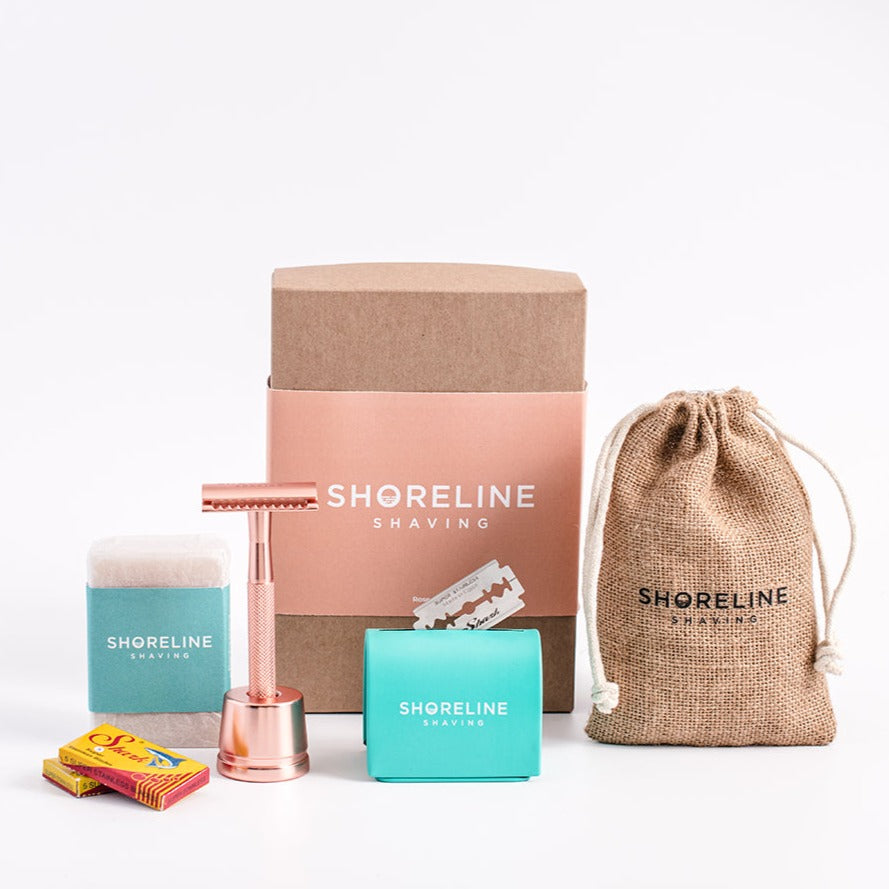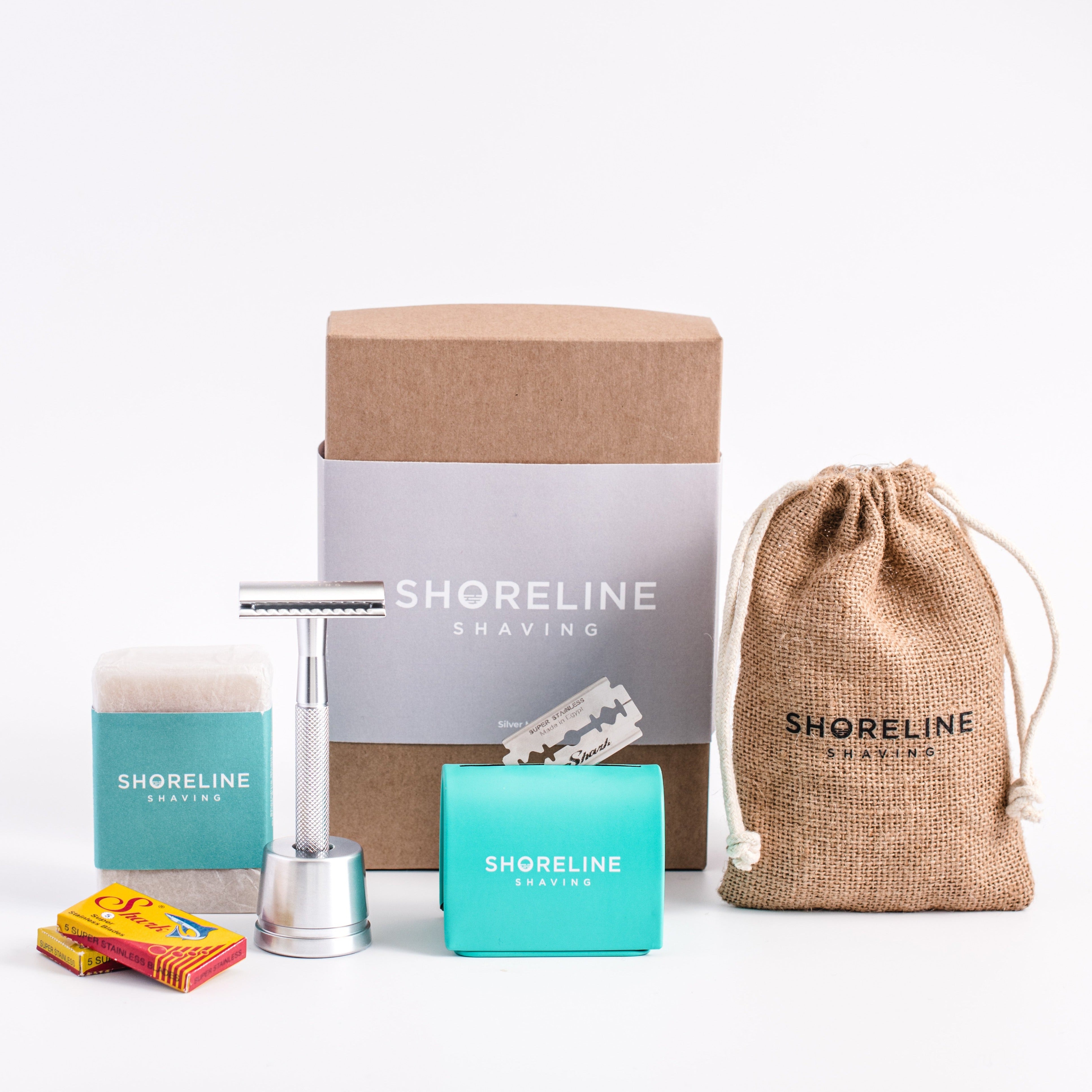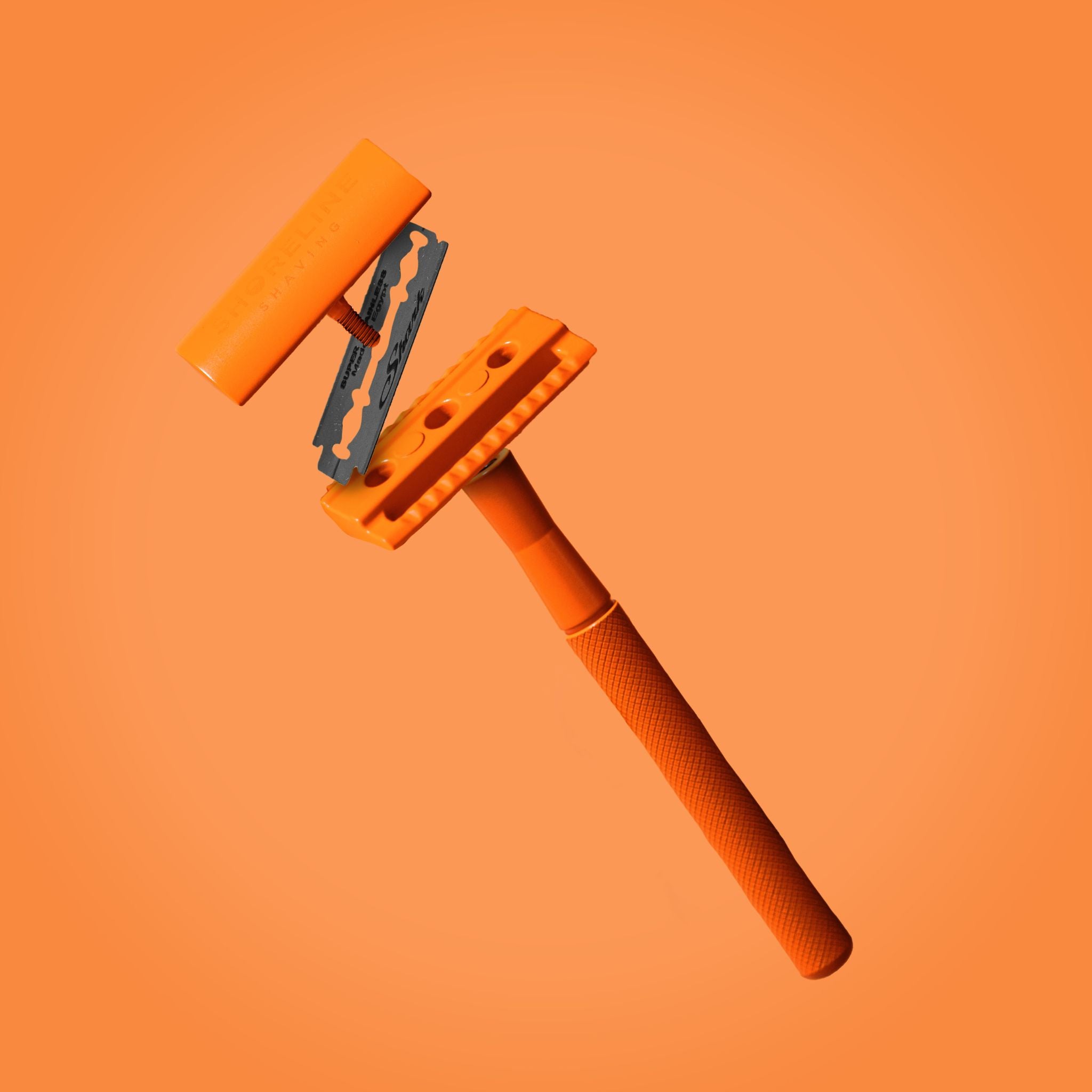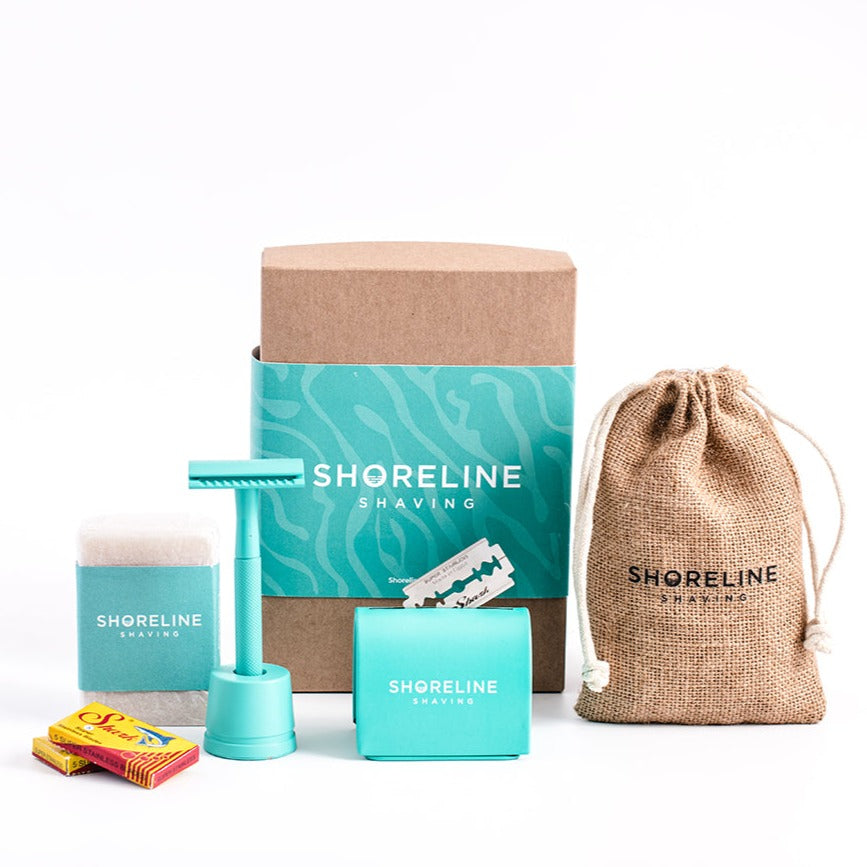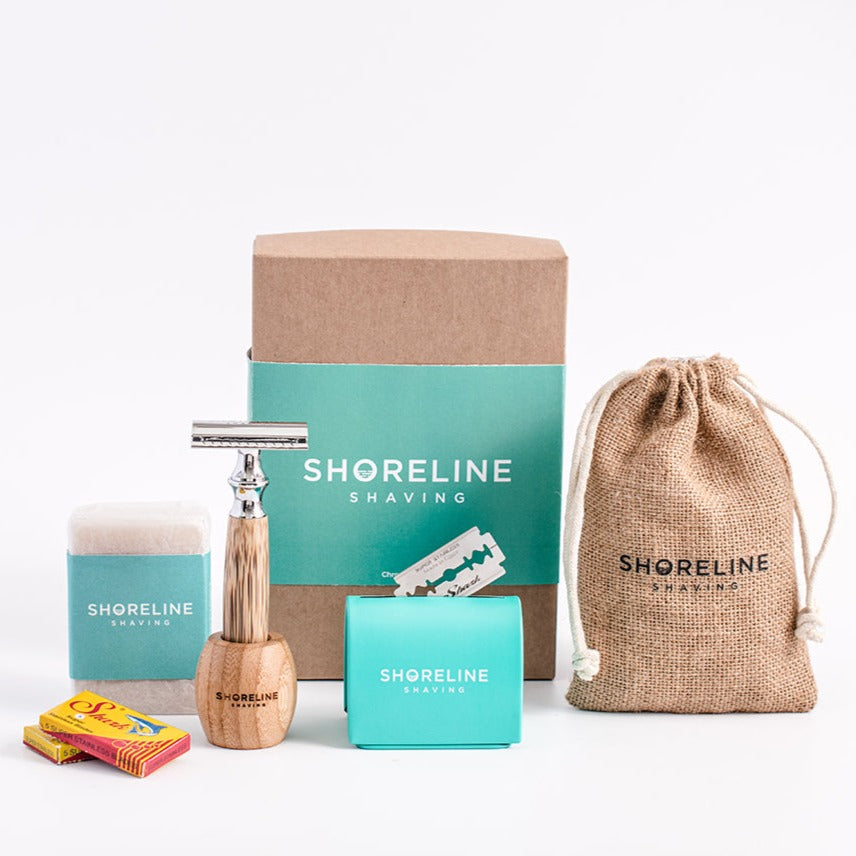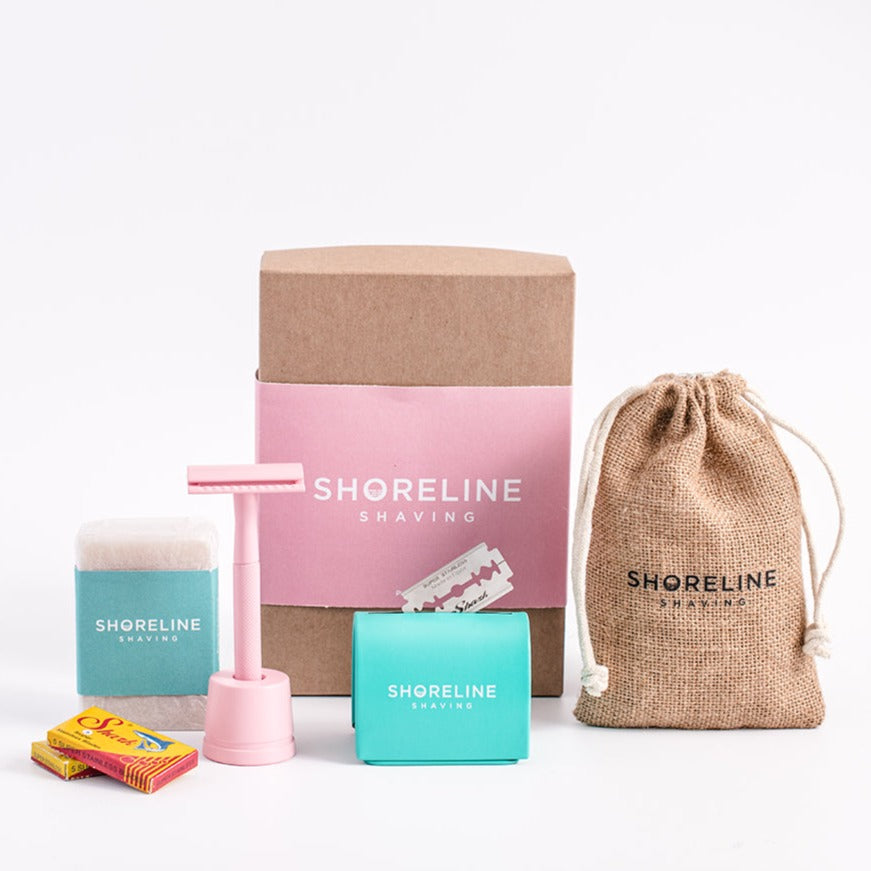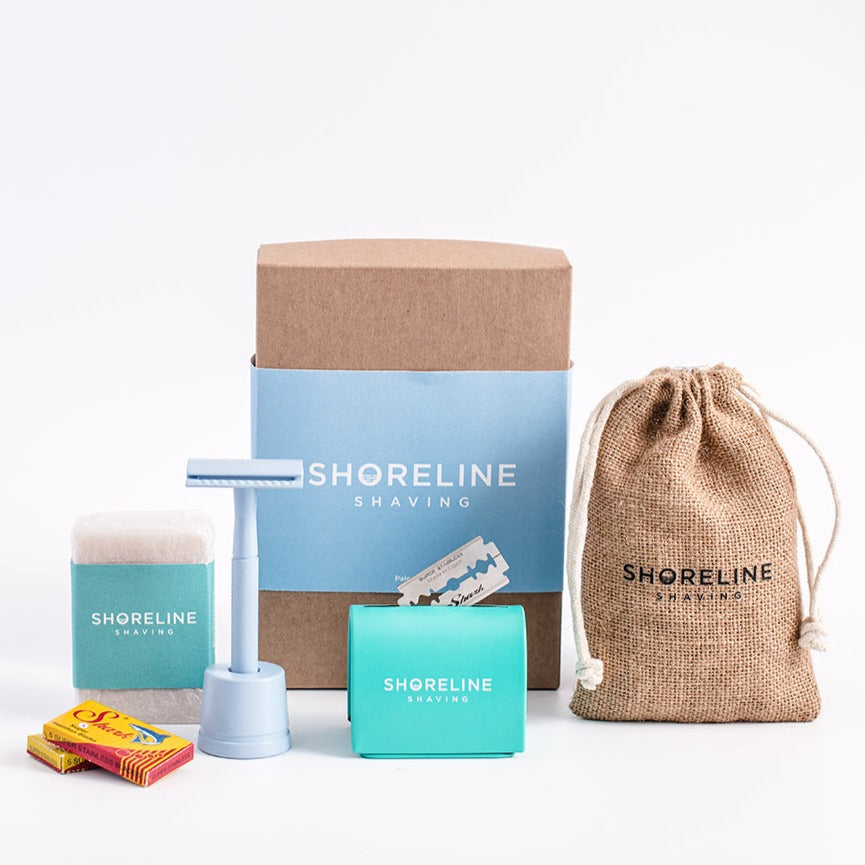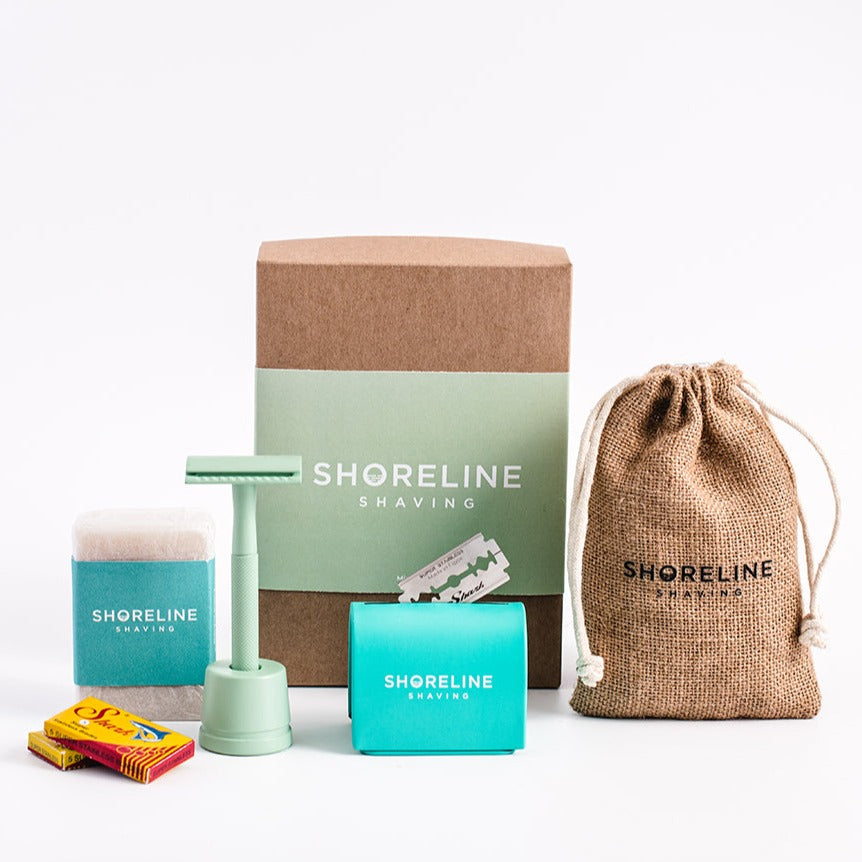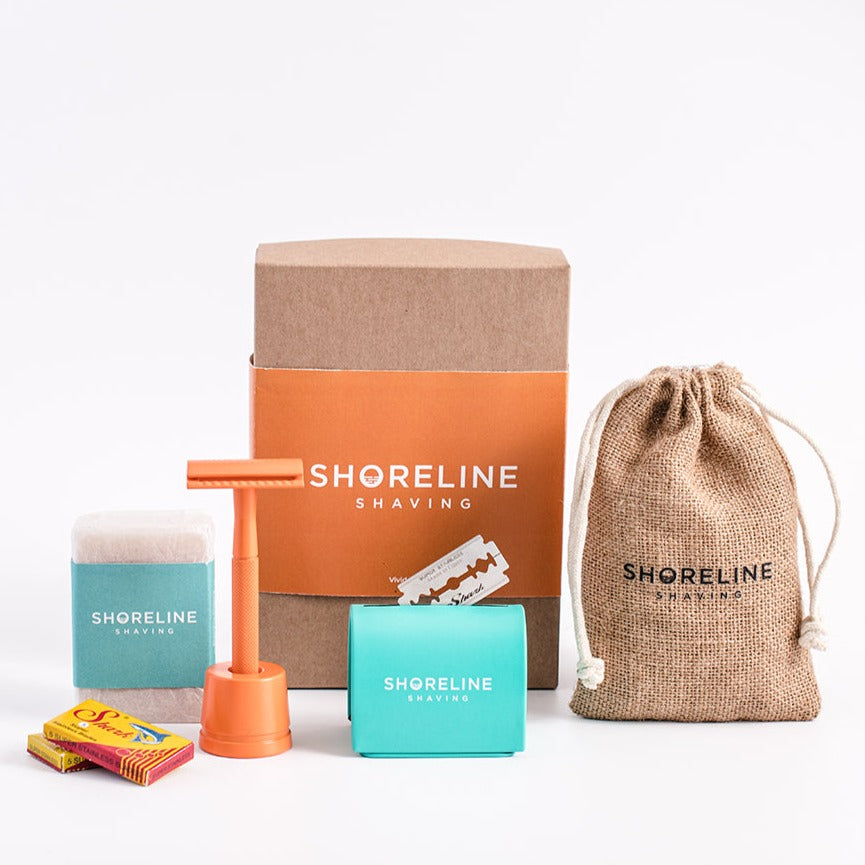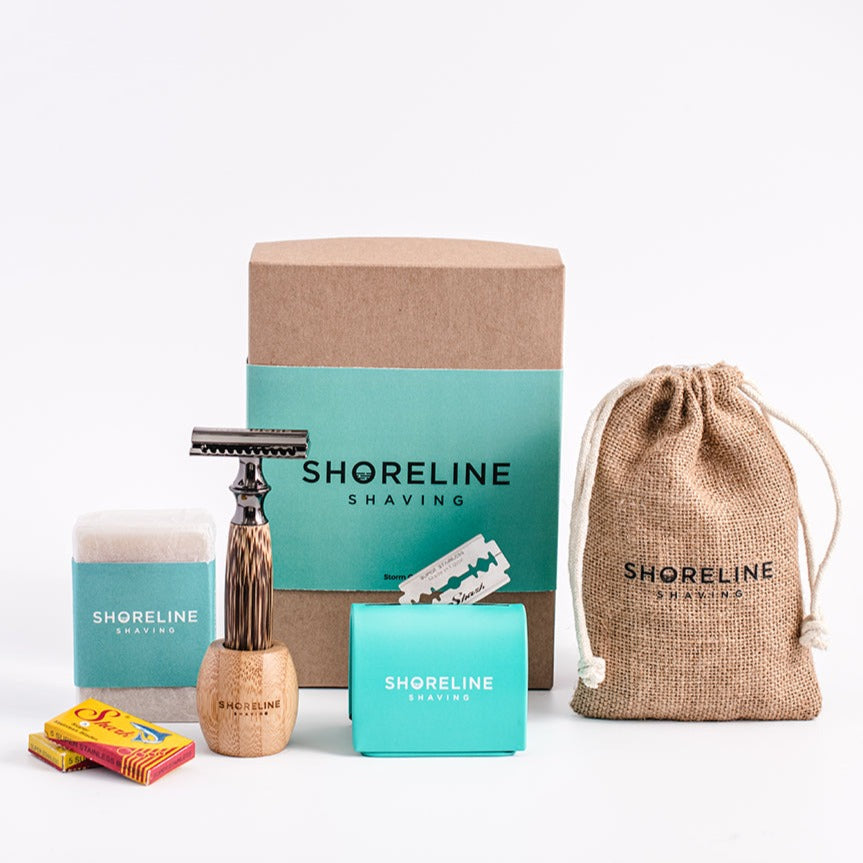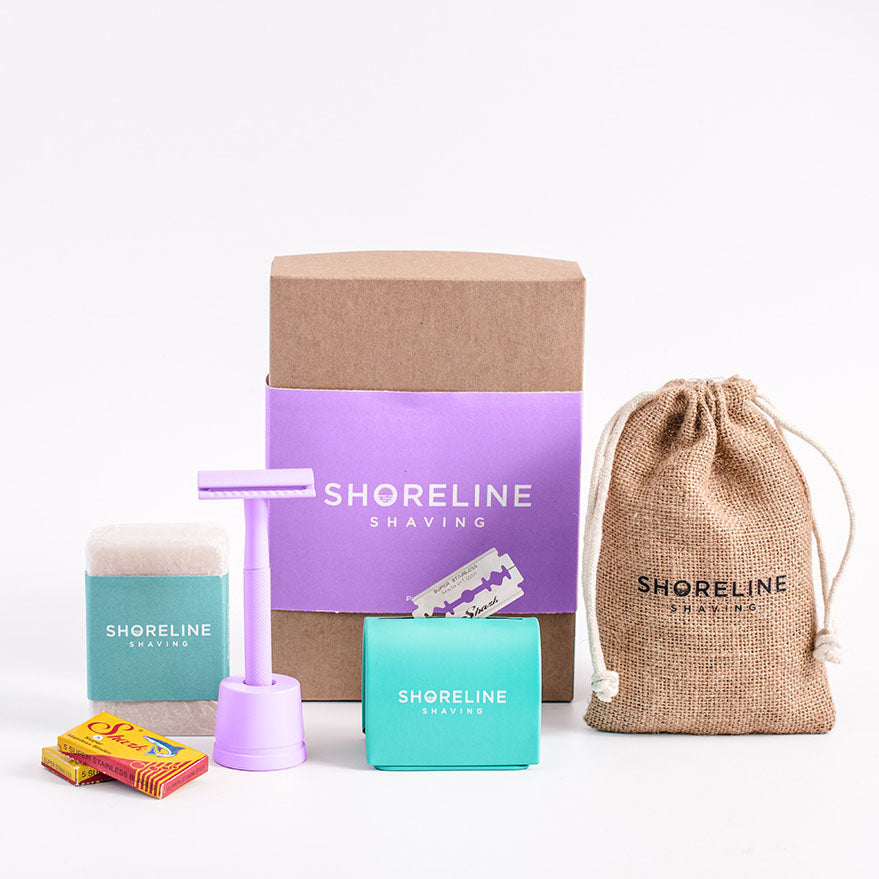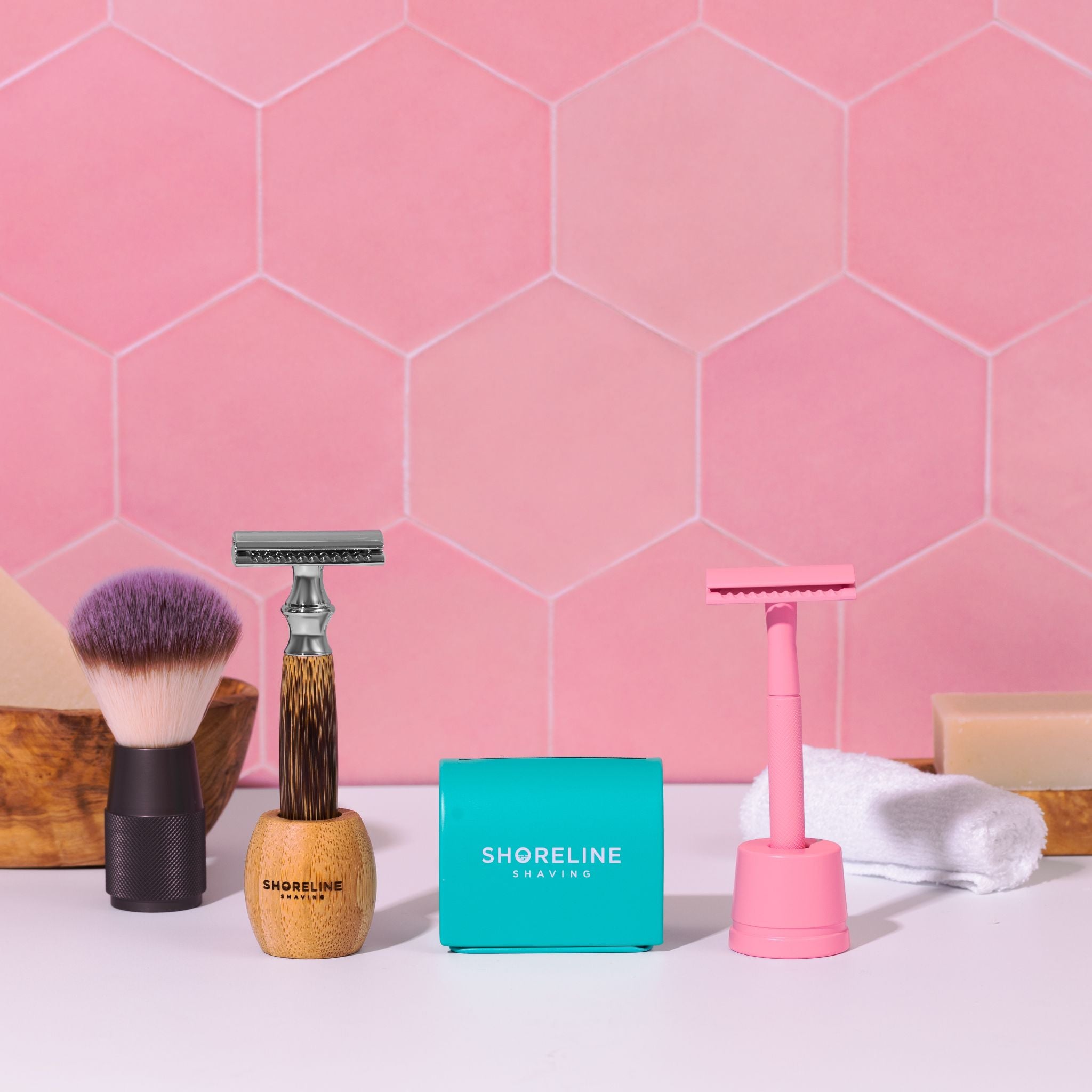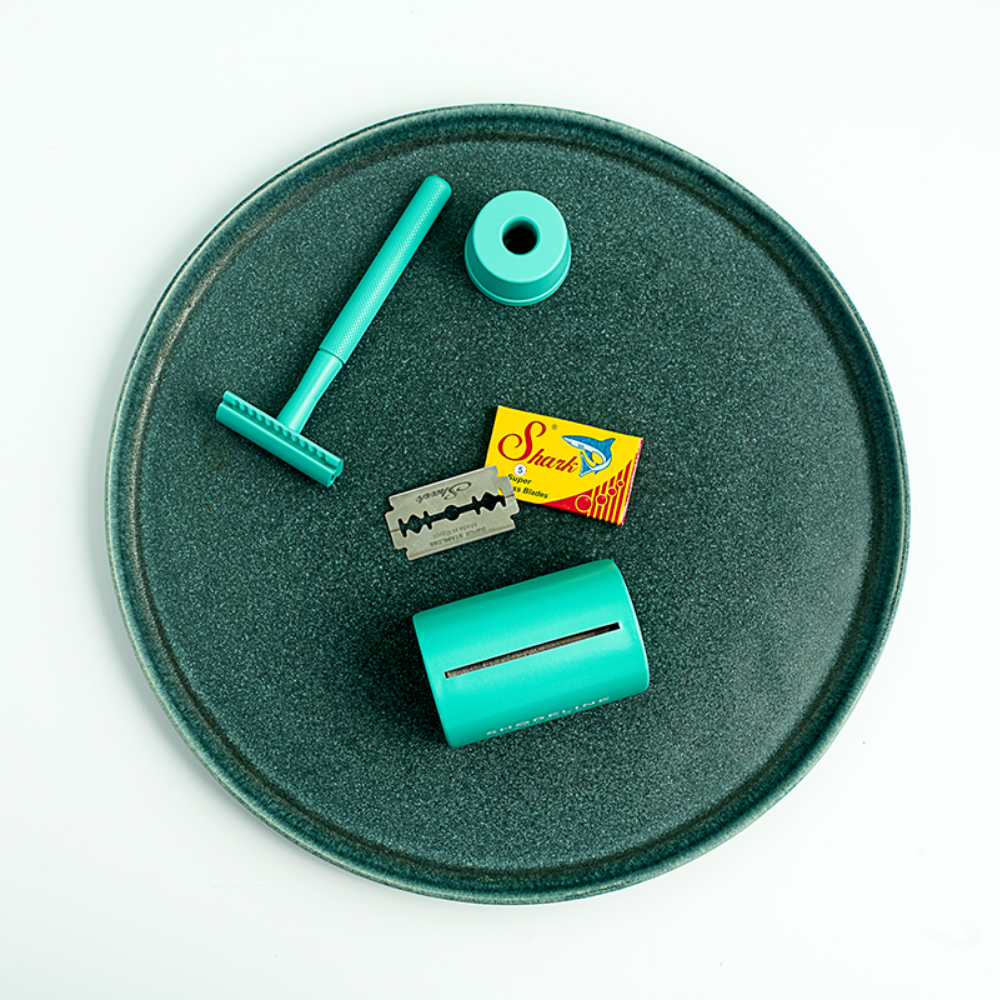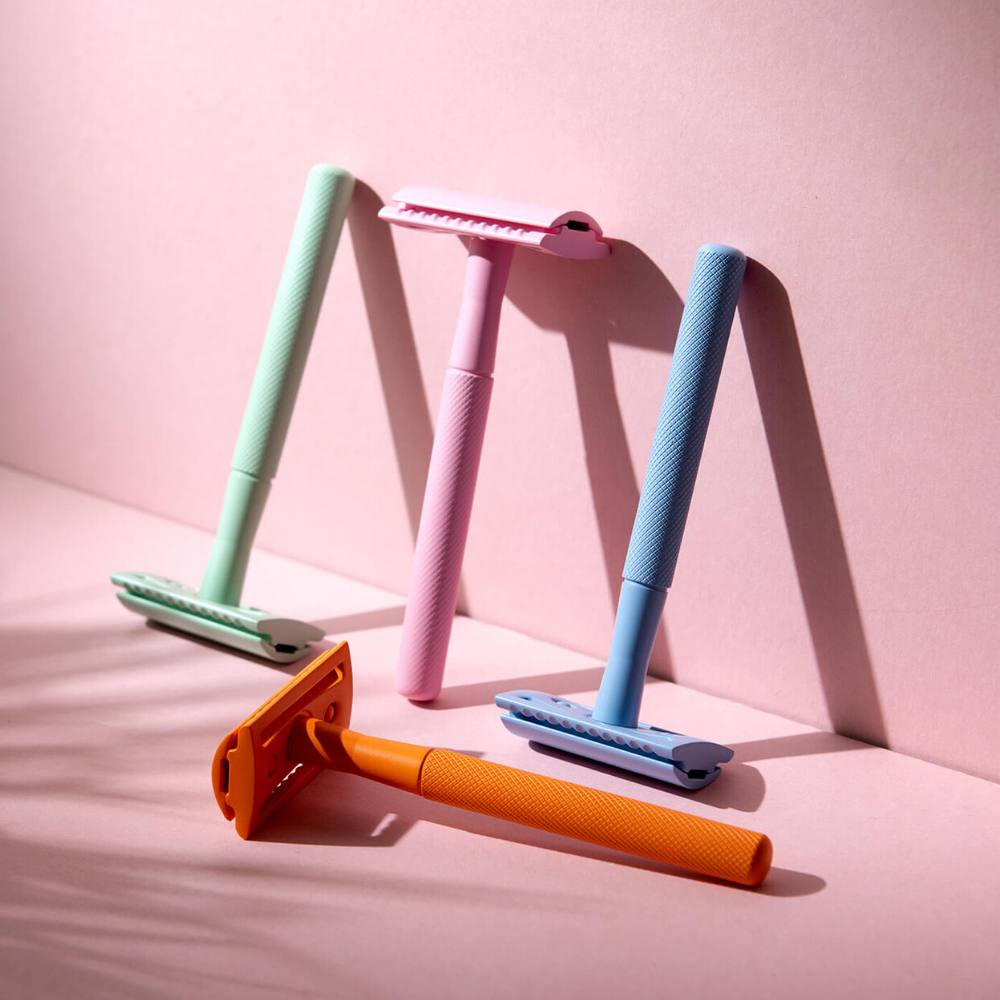How to Shave With a Safety Razor for Beginners
Written by Dean Harries
Updated: 16 Jul, 2024

In 2024, making the switch and learning how to shave with a safety razor for beginners can be a little daunting. There is certainly a skill to using a double-edge razor compared to the convenience of a disposable.
Thanks to our ultimate guide on why and how to use a safety razor, we’re going to walk you through the process of getting a closer and more comfortable zero waste shave.
So if you’re ready to step up your shaving routine, here’s everything you need to know, including quick links for the topics we're going to cover:
Content quick links
| Content List | Quick Links |
|---|---|
| Why Should I Shave with a Safety Razor? | Go to Section |
| How Easy is it to Use a Safety Razor? | Go to Section |
| 5 Steps to Establishing Your Shaving Routine | Go to Section |
| Should I Use Natural Shaving Soap? | Go to Section |
| How Often Should I Change My Blades? | Go to Section |
| Are Safety Razors Better for the Environment? | Go to Section |
| Conclusion | Go to Section |
Why Should I Shave with a Safety Razor?
Switching to a reusable safety razor unlocks so many benefits to your shaving routine and lifestyle, and not just for the environment, but also for your skin too!

Here are three simple reasons you should shave with a safety razor:
IT'S COST EFFECTIVE
Double-edge razors are designed to stand the test of time, so over a longer period you're more likely to be spend less on your hair-removal routine. Zero waste safety razors are an initial investment in your pocket and the planet.
You may find some high-end safety razors costing in the range of £70-£100, but as you can see from the Shoreline Shaving range of razors, travel sets and shaving kits, you'll typically pay between £15-£35 with a few inclusions thrown in.
After you've bought your razor, you'll only need to buy blades from then on. Some double-edge razor blades can be picked up for as little 99p for a pack of 5.
Shoreline Shaving stocks Shark Premium Stainless Steel Blades, completely plastic-free, which start from £3.99 for a pack of 5 blades. This costs around 80p per week.
IT'S A SUSTAINABLE SHAVING SOLUTION
Since the majority of safety razors are plastic-free, they're far better for the environment, lasting much longer than the typical disposable razor.
The only element of the safety razor which needs to be replaced is the blade, which is of course a recyclable material.
Every single one of our safety razors and shaving accessories is made from natural, sustainable or reusable materials.
Shoreline Shaving only makes eco-friendly shaving products that are free from plastic and are cruelty free, including packaging, labels and anything else.
Our shaving soap is made from natural and vegan-friendly ingredients, free from parabens, palm oil and sulphates.
Our blade banks are made from stainless steel. Our razor stands are made from bamboo or metal. Our hessian travel bags are made from sustainable hessian. That's just how we roll.
And we're certainly not the only shaving company with eco credentials out there. It's so easy to establish a waste free shaving routine these days, with loads of shaving companies offering plastic-free options.

IT'S KINDER TO SENSITIVE SKIN
A single-blade safety razor will generally cut the hair in one pass, without the need for a second pass of the blade. Disposable cartridge razors usually contain multiple blades and these multi-razor heads tend to be a harsher shave.
Simply because more blades across the skin at one time can tug harshly on the hair and skin, as you'd expect.
People don’t tend to replace these disposable blades as often as they should either, as they can be quite expensive. This can lead to clogged blades which give a blunt, ineffective shave, causing razor burn, bumps and irritation.
The great thing about safety razors is that you can disassemble them and clean them very easily. The blade can also be changed in 30 seconds, too, so it'll always be a convenient way to achieve the optimum shaving experience that's kinder to your skin.
Reasons to ditch multi-blade disposables:
- The cartridges can be really expensive
- The majority cannot be recycled
- Multi-blade razors can pull and tug on hairs
- They're irritable for sensitive skin
How Easy is it to Use a Safety Razor?

If you're a beginner, a mild, non-aggressive razor is probably the best option for you.
The aggressiveness of the razor can be determined by the gap between the bottom part of the razor head (the plate) and the top part (the cap). This also determines how much of the blade is visible.
The more exposed the blade is, the more aggressive the shave will be. It's important to be super careful when using a sharper/more exposed blade on a safety razor.
Always take care and make an informed decision when purchasing.
So with many options to choose from, it can be tricky and daunting to decide on the best safety razor for you. Here are some elements of a safety razor to consider when narrowing down your search.
Weight of the Razor
Using a weighted safety razor provides a steadier hand and may help you feel more in control when shaving. The weight of the handle can also help make it easier to remove unwanted hair without having to apply pressure on your part.
Let the weight of the razor do the work for an optimum shave without the burn.
Handle Length and Grip
Safety razor handles are usually available in two lengths: 80mm and 100mm, although there are some custom lengths on the market. Whilst this won’t necessarily make a difference to the quality of the shave, it's an important choice for comfort and reach.
Which size you pick depends on your personal preference of how the razor feels in your hand. Non-slip razor handles with a textured, rounded or bulbous grip tend to hold better and won't slip out of the hand when covered in water and soap.
Again, it's all about personal preference and what feels right for you.
The Cap Shape
The cap is the top of the razor above the blade (usually with the brand's logo on) and the cap's curve impacts the sharpness of the shave. The bigger the curve, the more angled your blade is and the milder your shave will be. If the cap is straighter, the shave will be more aggressive.
Head Type
A range of head types are available for safety razors. They are determined by the shape of the safety bar: a piece under the blade that protects the skin from the blade. Here's a brief list of razor heads you may come across:

Safety Bar: featuring a flat and straight safety bar, this is the safest option for beginners, thanks to having the least amount of blade exposed. They will catch less hair whilst shaving, so more passes over the skin will be needed to get the desired results.
Verdict? For daunted beginners with fine hair that's easy to cut. Safe, but will require more passes and shaving.
Scalloped: these feature safety bars with a grooved bar surface and are the most commonly used safety razor type. Those with sensitive skin will benefit since the grooved plate allows more hair to be shaved, so less passes and contact with the skin is required.
Verdict? A slight step up from safety bar and will require more skill. Very safe and easy to use.
Closed Comb: this is the perfect middle ground as the safety bar guards the blade whilst a comb directs the hair into the razor. This head type is suited to those with relatively coarse hair and those who want a close shave without too much aggression.
Verdict? For beginners who are willing to learn and take their time, but will reap the rewards with safety and close shaving.
Open Comb: these types of heads have no safety bar, meaning the blade is completely exposed. This type of blade will require a very skilled user and much more focus is needed when using them, as they are unforgiving. They are best reserved for thicker, more abundant hair.
Verdict? For experienced, skilled users. Aggressive style of shaving.
Slant Head: a rare option in the shaving world, which features a straight safety bar that is slanted in its position. They are intended to provide an efficient shave, since the blade slices at a shearing angle; as opposed to cutting.
Again, this is a razor head that requires more skill, but will reap the rewards once mastered.
Verdict? For experienced, skilled users who have mastered the other razor heads mentioned above.
!If you're unsure if a certain razor is for you, send a message to the manufacturer or shop and ask them everything you need to know.
Don't go out and buy a safety razir if you're unsure. There are plenty of shaving experts out there who love to share what they have learned over the years.
5 Steps to Establishing Your Shaving Routine
First things first - how is shaving with a double-edge razor going to alter your everyday shaving routine?
Well, since you’ll be using a sharper and more precise blade, you’re going to need to invest some time into learning about things like your natural hair growth direction and your ideal shaving technique. Let’s get started!

STEP 1: Understand Your Unique Direction Of Hair Growth
Before you begin shaving with a safety razor, you’ll need to take some time to figure out your natural direction of hair growth on the relevant areas of your body.
Stubble on the face and neck tends to grow in different directions, so this will affect the direction in which you should shave in order to minimise skin irritation.
Areas such as the neck and chin can also see hair grow sideways or even in a spiral pattern, while hair on the face and upper chin tends to grow downwards.
Shaving against the grain is one of the leading causes of irritation when shaving, so getting to grips with your natural hair growth is going to be the key to your success.
For beginners, we recommend shaving with the grain until you've mastered the art of shaving with a safety razor. You'll then have enough confidence to shave against the grain, when required, and avoid any cuts or ingrown hairs.

STEP 2: Preparation - Use Shaving Soap With Natural Ingredients
Good quality shaving soap made from natural ingredients helps the blade of a safety razor effortlessly glide across the skin, as well as minimising irritation. A natural and vegan-friendly shaving soap, without any chemicals or nasties, is your best bet.
Once you dampen the skin and open up the pores with warm water and a clean cloth, then lather up your skin with the shaving soap bar, your hair and skin will become softened.
This leads to a smoother and more comfortable shave, as the hairs are removed more easily.
If your skin is overly sensitive, this is especially important as the right shaving product will help you to avoid redness, burn and bumps.
Some people prefer to use an eco-friendly shaving brush to apply product to larger areas of the body, which can help get into the nooks and crannies.
If this is your preferred application, try to look for shaving brushes made with planet-based bristles, as opposed to bristles made from animal hair or nylon. If not, go for one with eco-friendly packaging.
!Shaving brushes made from plant-based bristles are coarser than brushes made from animal hair or nylon.
Plant-based bristles are generally derived from the jute plant (hessian) so are much more sustainable and kinder to the environment.
STEP 3: Always Use a Sharp Blade & Know When to Change It
High-quality razor blades with a sharp edge are a necessity when shaving with a safety razor. When a blade starts to blunt, whether it's from overuse or lack of care, your skin will feel the effects.
A general rule of thumb is using a blade 5-10 times on a small shaving area, and 2-3 times on areas that are much larger. This all depends on how the blade is being used and the area it is covering.
We always recommend using a proactive approach to blade changing, which means replacing the blade before it gets blunt and causes any discomfort.
If you take a reactive approach, change the blade as soon as you feel any discomfort, burn or irritation. If you're having to work harder with your safety razor, then it's time to change the blade.
STEP 4: Master the Angle with a Light Touch & Short Strokes
You should allow the weight of your reusable safety razor to do most of the work, rather than attempt to drag or press it across the skin.
You’re ideally looking to hold the razor at a 30 degree angle against the skin. To achieve this angle, lightly rock the blade against your skin until you feel it lift the hair. This will help you find the perfect shaving angle.
Place minimal pressure on the skin and hold the double-edge razor with a light and controlled grip, and let it glide across the surface area of your face and body.
Take your time by using slow, short strokes with each pass, as this will help prevent nicks and cuts, often caused by long, fast sweeping strokes.
The shave will also be more comfortable since the blade will be less likely to tug at the hair and clog the safety razor.

STEP 5: The Importance of Aftercare
Aftercare is just as important as the actual process of shaving with a safety razor. Once you're finished shaving, rinse the skin with fresh cold water to remove any excess shaving soap and hair. Rinsing with cold water will help close your pores after shaving, too.
Gently pat your skin dry with a soft clean cloth before applying a balm, lotion or moisturiser, which will help sooth the skin.
Remember to thoroughly rinse or clean all tools used and allow them to dry completely to maintain the quality of your razor. Grease, dead skin cells and hair can build up if your safety razor isn't cleaned regularly.
We recommend taking apart your razor, carefully placing your blade to the side, and wiping your razor down with a dry towel after each use. This will help maintain the razor and prevent the blade from getting rusty.
It will take time for you to feel completely comfortable and confident using a safety razor, but with practice you’ll become an expert.
Should I Use Natural Shaving Soap?
Natural shaving soap bars are an ideal alternative to shaving soap products which rely on plastic packaging that cannot be recycled.
Shaving soap bars are more cost-effective, too, since a little goes a long way. Even through daily use with a safety razor, one shaving soap bar can last you several months at a time.

Shaving soap made with natural ingredients can also lead to a better shaving experience, as it allows the natural oils to more easily lift from the hair. This lets water to penetrate and soften the hair, leaving you with a cleaner cut, closer finish and less irritable shave.
With a focus on natural and cruelty-free ingredients, soaps like these can create a richer, deeper lather and provide greater hydration. Especially compared to products made with preservatives, chemicals and nasties.
Since a natural shaving soap bar is self-preserving and needs no plastic packaging to keep it fresh, they are much more environmentally friendly than products dispersed from an aerosol or mixed plastic container.
Switching to natural shaving soap is easy and doesn't require a transition period to feel the benefits.
However it is important to check the ingredients within the soap before use, especially if you have skin allergies.
We have a range of Shoreline Shaving natural shaving soap bars, including orange & lavender scented soap, and an unscented option. All of our soap bars are natural, vegan-friendly and plastic-free, free from any nasties.
But if you're allergic to certain ingredients, for example lavender oil, you may opt for the unscented version of the shaving soap.
How Often Should I Change my Blades?
Reusable safety razors only need blades to be changed every couple of weeks, although this does depend on how often you shave. As a rough estimate, use a blade 5-10 times on a small shaving area, and 2-3 times on areas that are much larger.
Although if you do notice that your skin becomes more irritated from shaving, or your shave is not as close and precise, it’s usually a good indication that you need to replace the blade.
!The material and coating of a blade can effect a few things including how long the blade lasts, rust prevention and sharpness.
Most double-edge blades are made from stainless steel and the most popular coating is platinum.
This is just a general rule of thumb since various factors can affect the life of your double-edge razor blades. These include:
Your Hair
The thickness and density of your hair will impact how quickly your blade becomes blunt. If you have thicker, coarser hair you may find yourself replacing your safety razor blades more often than someone with thinner or finer hair.
Surface Area
Consider the size of the area you’re shaving. Some of you may see thick hair across your face with little on the neck, while others will experience the same thickness all over and thus have to shave more often.
You may have to shave your legs every day while others can enjoy a hair-free look for a couple of days between shaves. Your personal preference on appearance will of course matter, too.
The Blade
The material of your blade will impact its’ performance and longevity. Try a few different brands in order to find the right blade for your skin, since sharpness and thickness can differ.
The material used, the thickness of the blade and the coating will all make a difference to how often you need to buy new blades.
How to store and protect your blades is also key.
Since the blades of safety razors are typically made from stainless steel, they can be corroded by over exposure to moisture and other chemicals over time.
Ensure you always dry off your blades before storing them in a clean and dry place. If possible, storing your shaving kit outside the bathroom is best to prevent erosion from the steam and humidity.

Are Safety Razors Better for the Environment?
Safety razors are a great zero waste alternative to mass produced disposable razors, which are often made of plastic.
Generally made out of a combination of robust metals for durability, and sometimes designed with other sustainable materials such as bamboo, the long-lasting design is ultimately based on sustainability and reusability.
This isn't some new shaving concept we're introducing you to; safety razors have been in circulation in some form for over 100 years.

This a shaving product that's meant to last and the same can be said of shaving accessories, and the packaging that comes with it.
Eco-friendly and plastic-free shops all over the world are offering a variety of double-edge safety razors in all shapes, sizes and colours. This includes plastic-free shaving accessories, too, such as recyclable blade tins, metal razor stands and eco packaging.
So if you’re trying to lead a more environmentally friendly way of life, then there has never been a better time to consider learning the art of shaving with a reusable safety razor.
Conclusion
The popularity of safety razors continues to grow in 2022 due to the demand of reusable products and beginner's looking to learn new skills.
An increase in accessibility and range of styles of reusable razors has helped plastic-free businesses get them into consumers hands.
There are plenty of razor companies, eco-friendly shops and shaving blogs that have endless tips, guides and reviews to help you make an informed decision.
The rest is up to you. Remember to take your time, not get frustrated and enjoy your new shaving experience. Your safety razor will become your new best friend.

